Guest writer: Anna Nilsson Spets
Once upon a time I was a field biologist, camping all the time, in all weathers, and I think I would have said to myself that enough of camping.
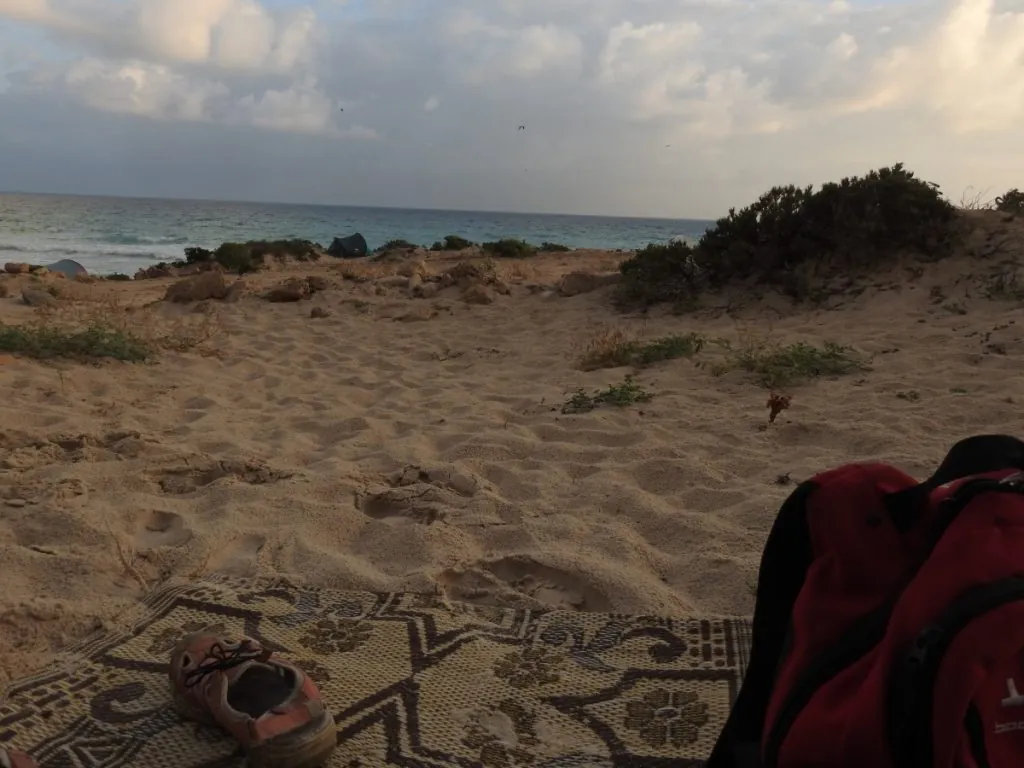
After this trip I have reconsidered the decision. If you get the chance to camp in all these beautiful places in a totally unexploited nature, you don't want to miss it. Sure there are hotels, a couple, but long distances and extremely bad roads make it practically impossible.
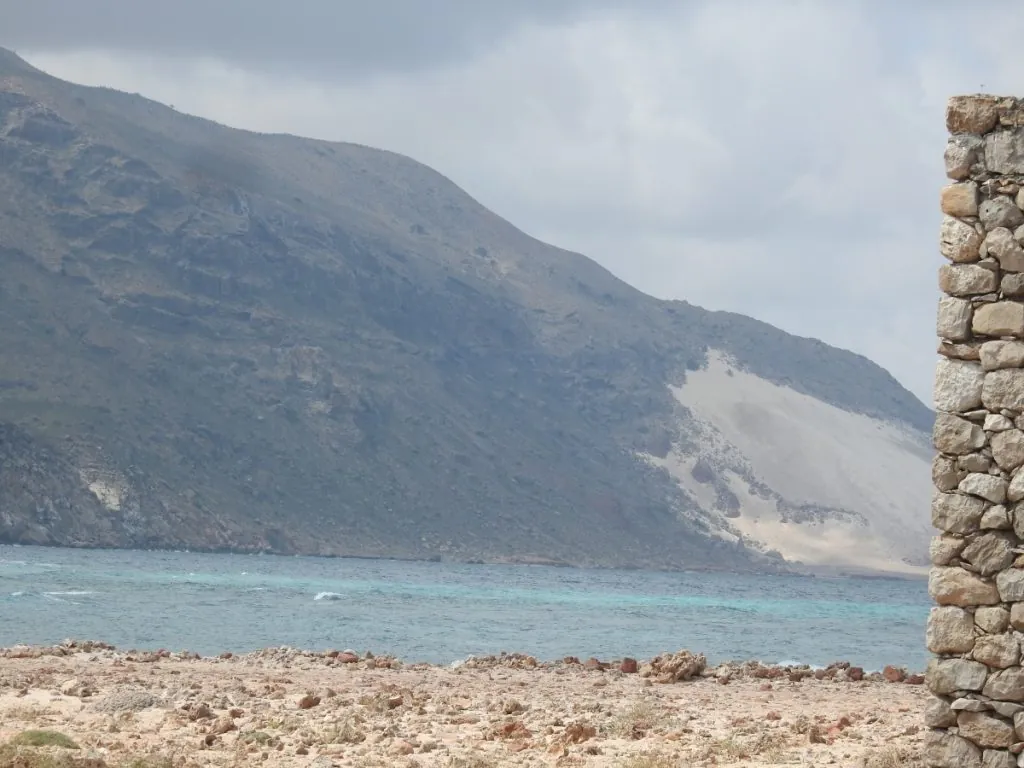
The team Socotra Speciality ToursWhat a bunch, then.
Every day the tents are set up with mattresses and blankets, bags are carried down and food is cooked three times a day, like an all-inclusive.
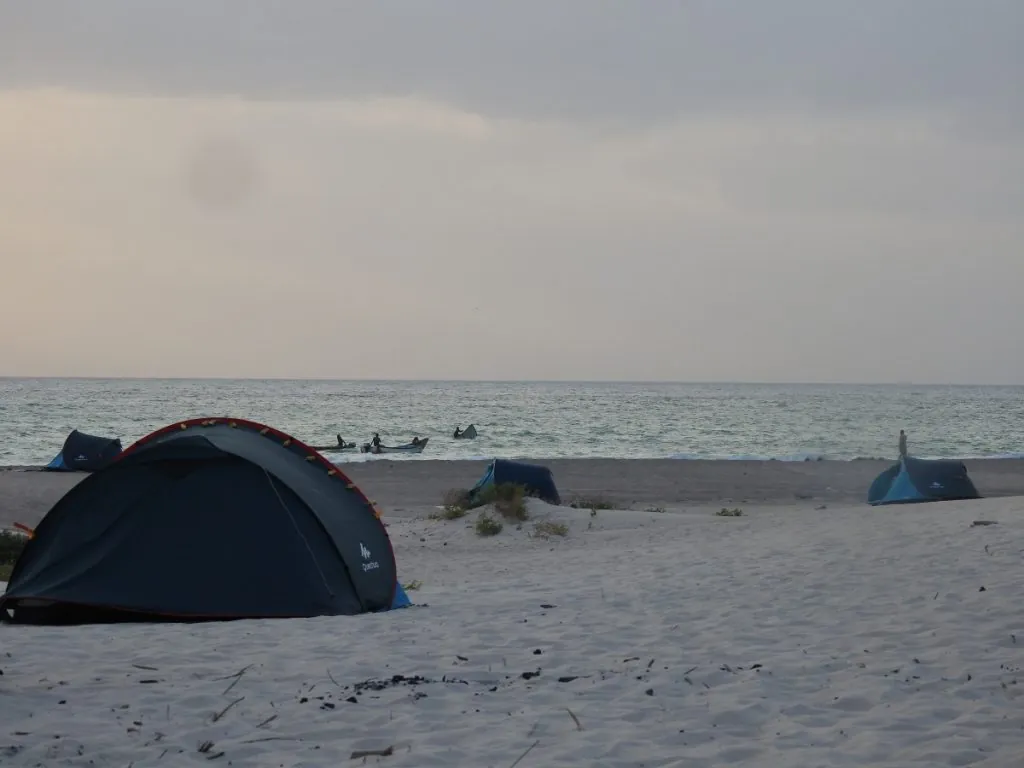
Day 3: We move on to the Homhil plateau, a protected area known for its natural freshwater pool and wide diversity of flora and fauna.
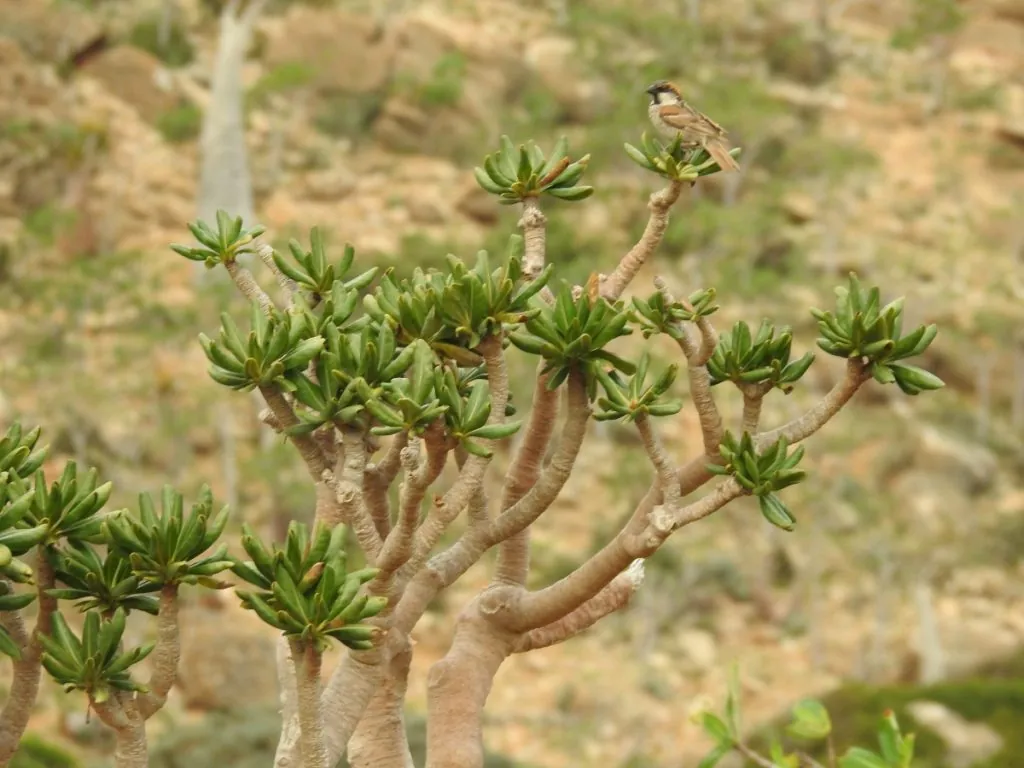
The first stop of the day is the Socotra Museum, one of the smallest museums I have ever been to. A bit dusty and worn, but really interesting to see different forms of tools, clothing and crafts.
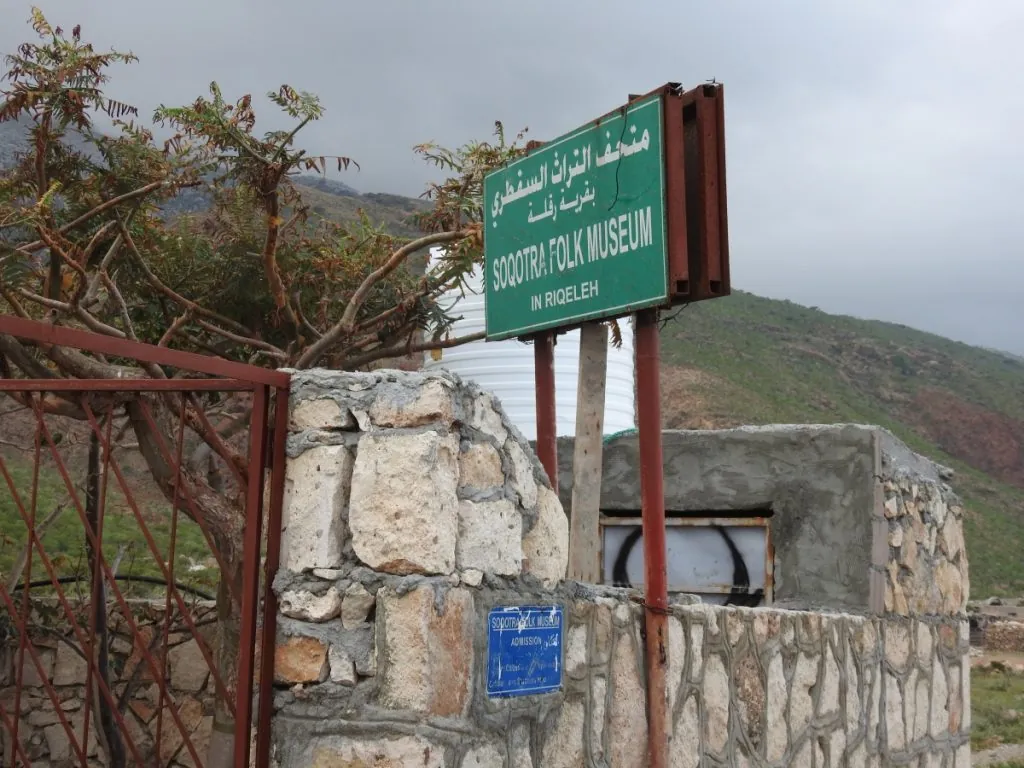
Time seems to stand still here, the millstone still in use, the simple loom moulding the most wonderful, coarse fabrics.
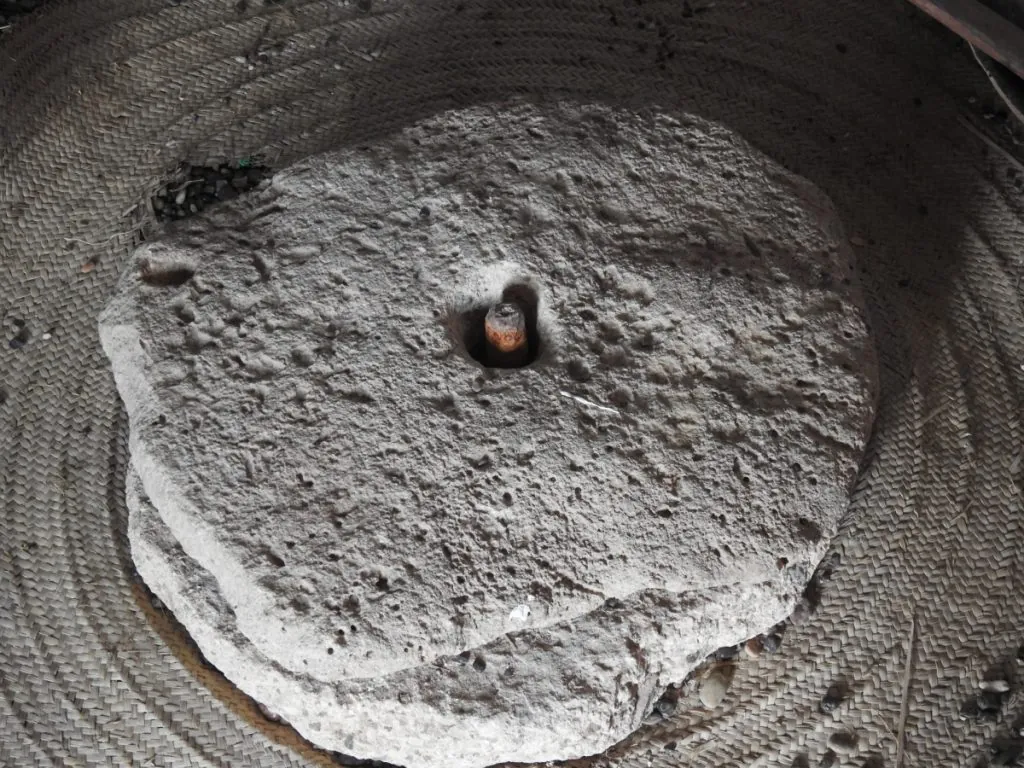
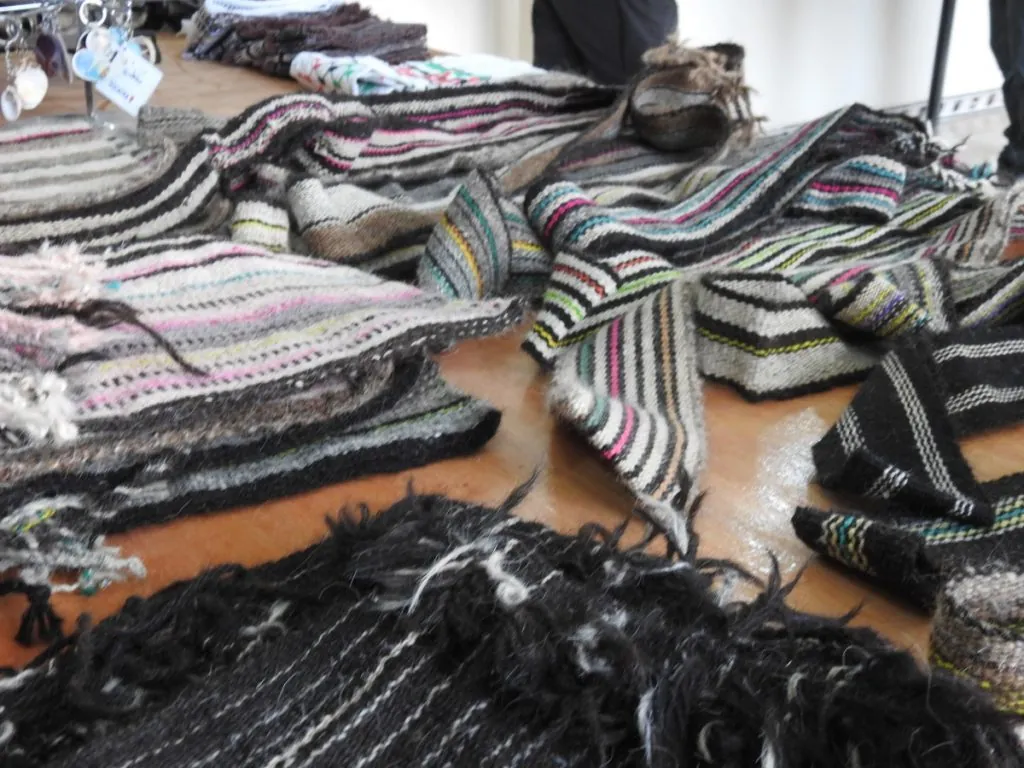
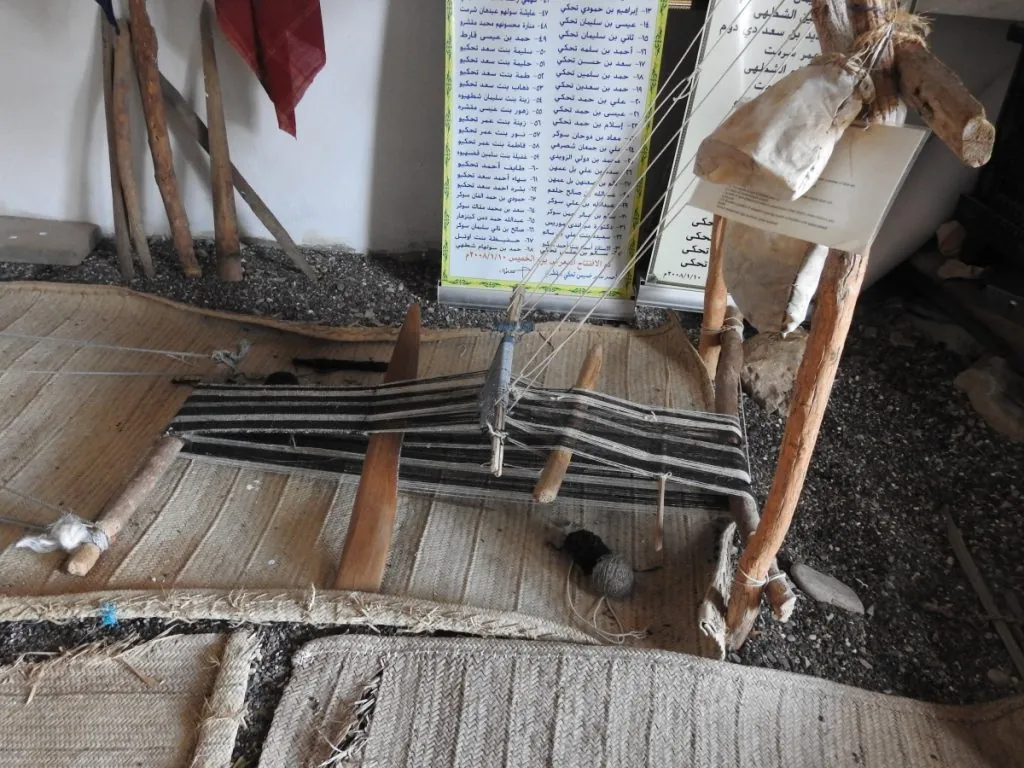
And this is how you climb trees in Socotra!
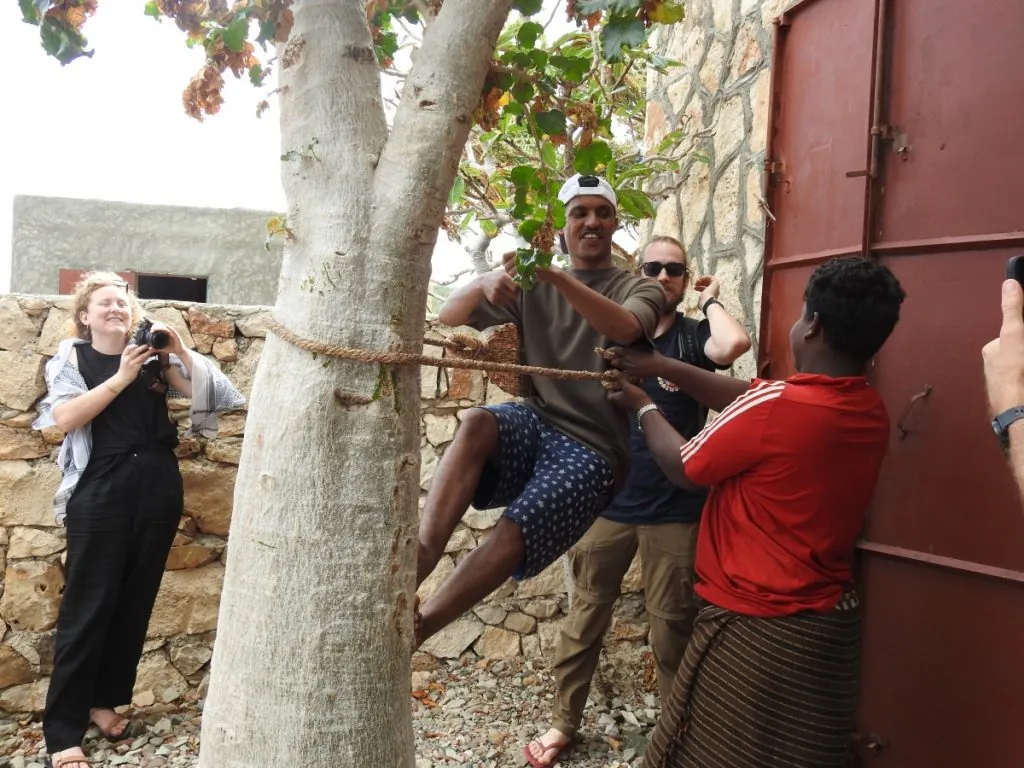
A few small purchases are made in the village shop, a handful of curious children gather around us of course.
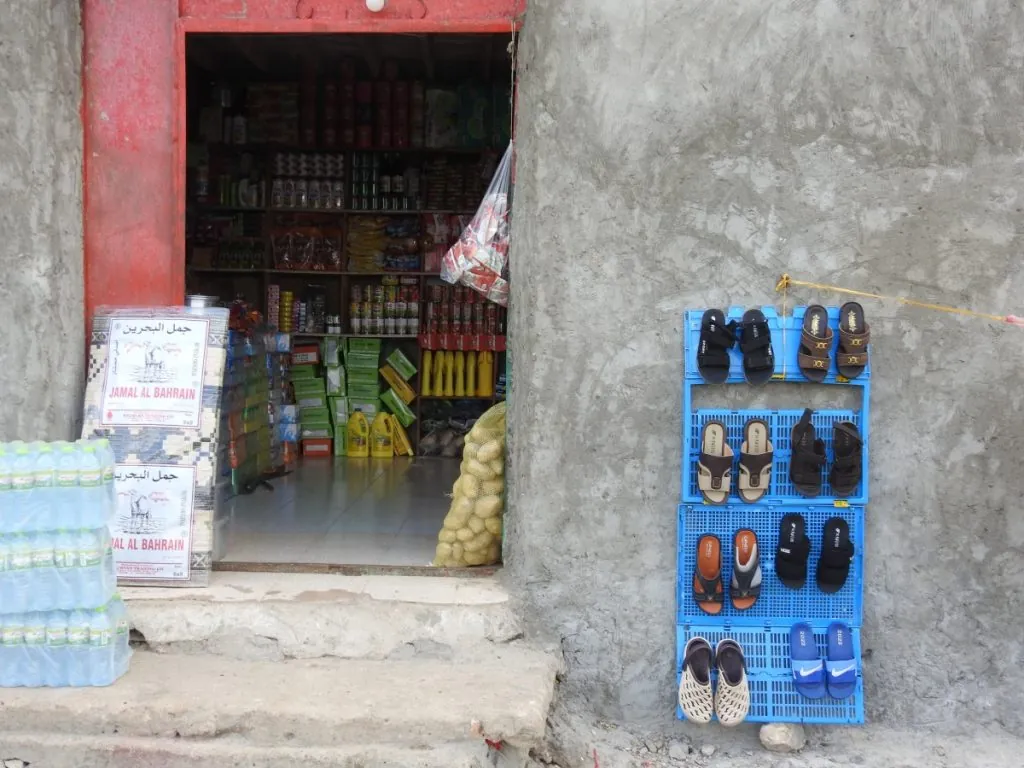
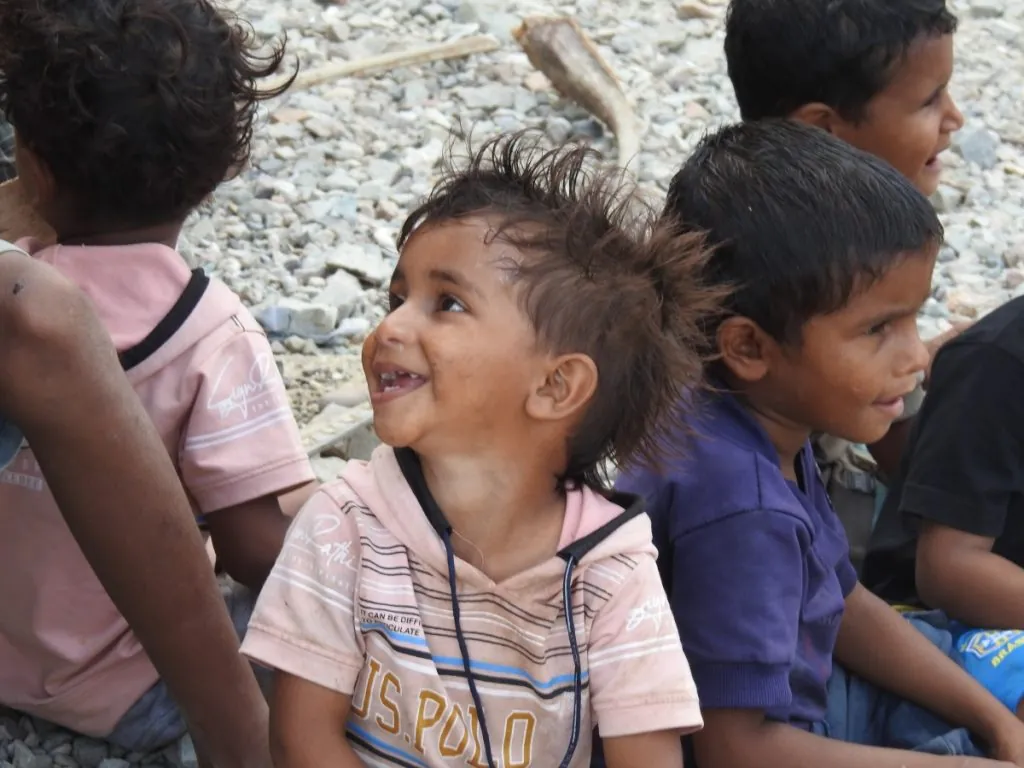
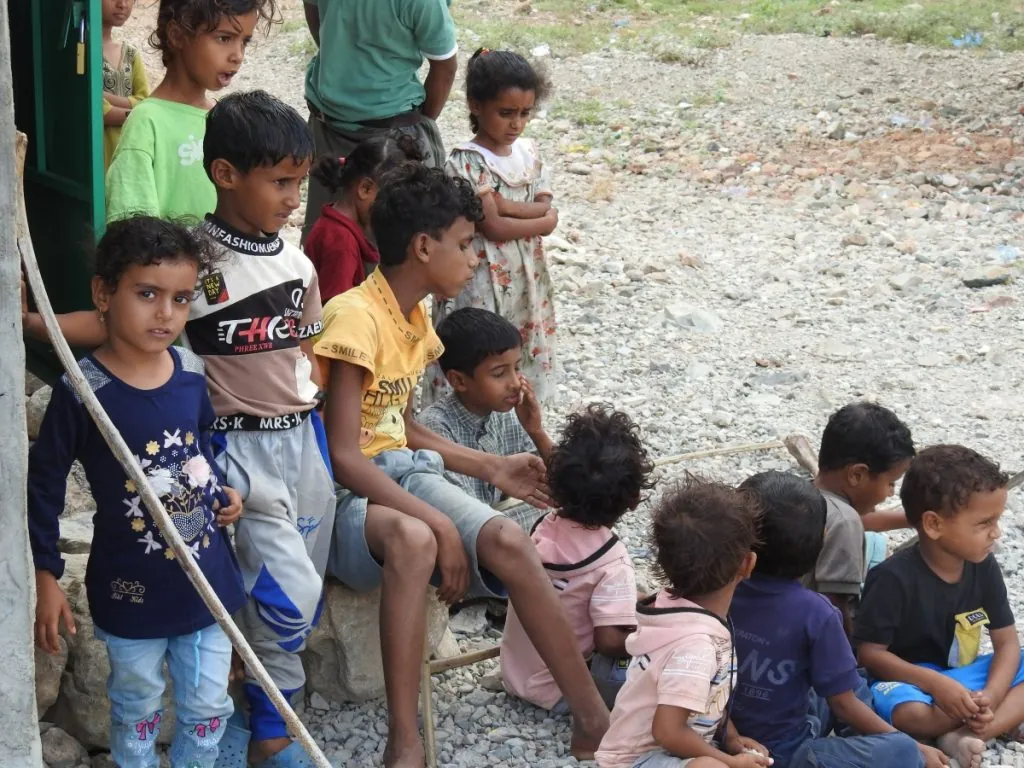
The villages, yes, they are mainly located along the northern coast, the houses are built of stone to keep the heat out and withstand hurricane winds and extreme rainfall at that time of year.
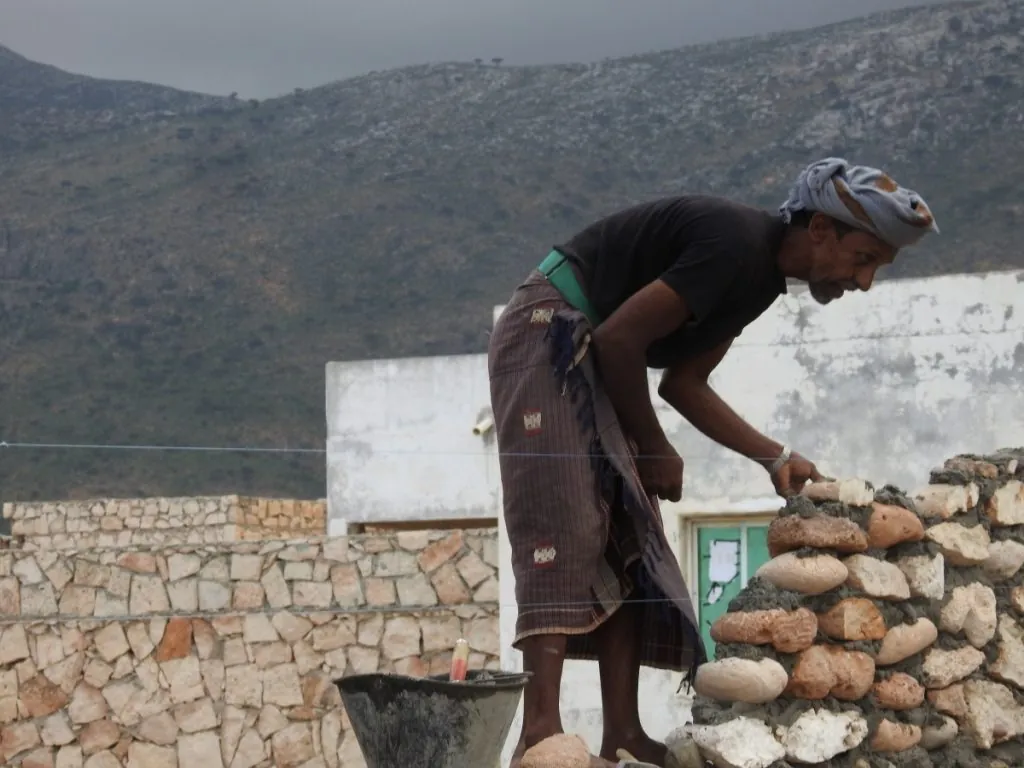
The doors are all different, colourful with different ornaments.
In January, the temperature is a pleasant 25-27 degrees, which warms my rather tired body and soul.
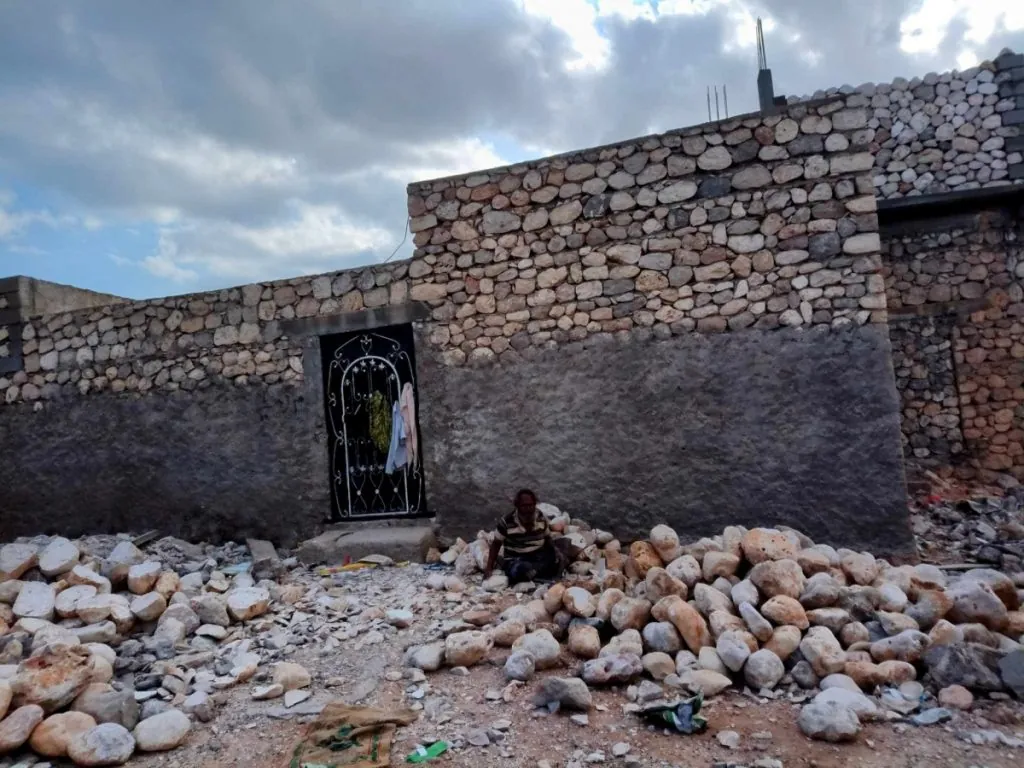
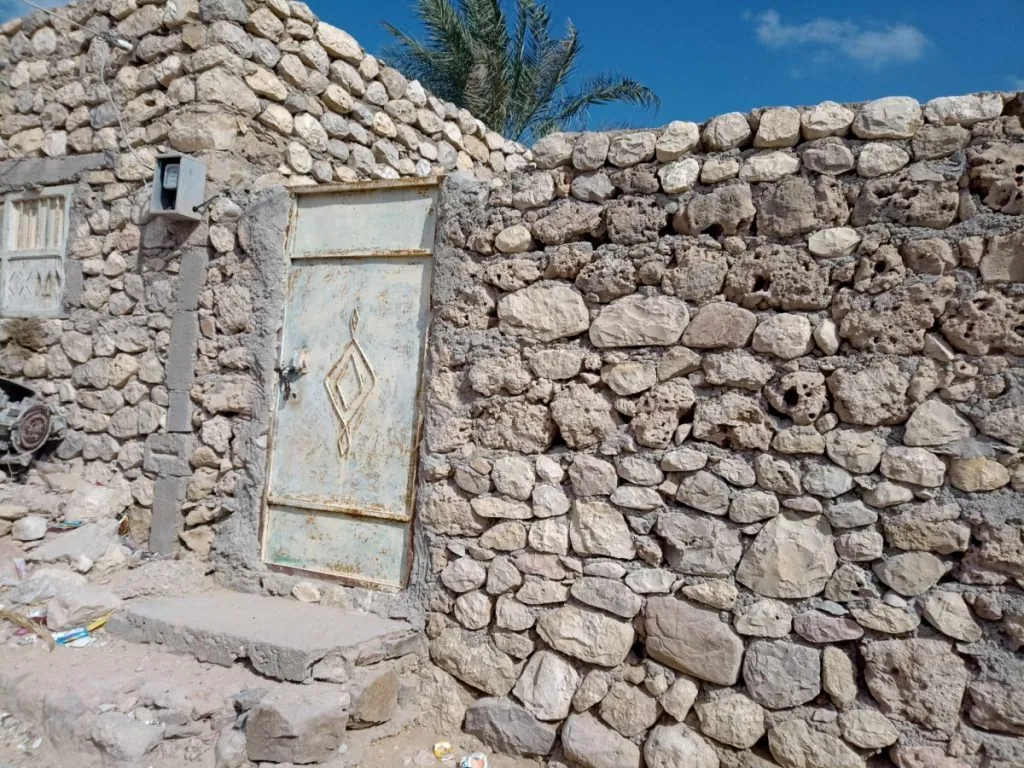
The landscape is breathtaking, green valleys and high mountains, the road winds like a rattlesnake.
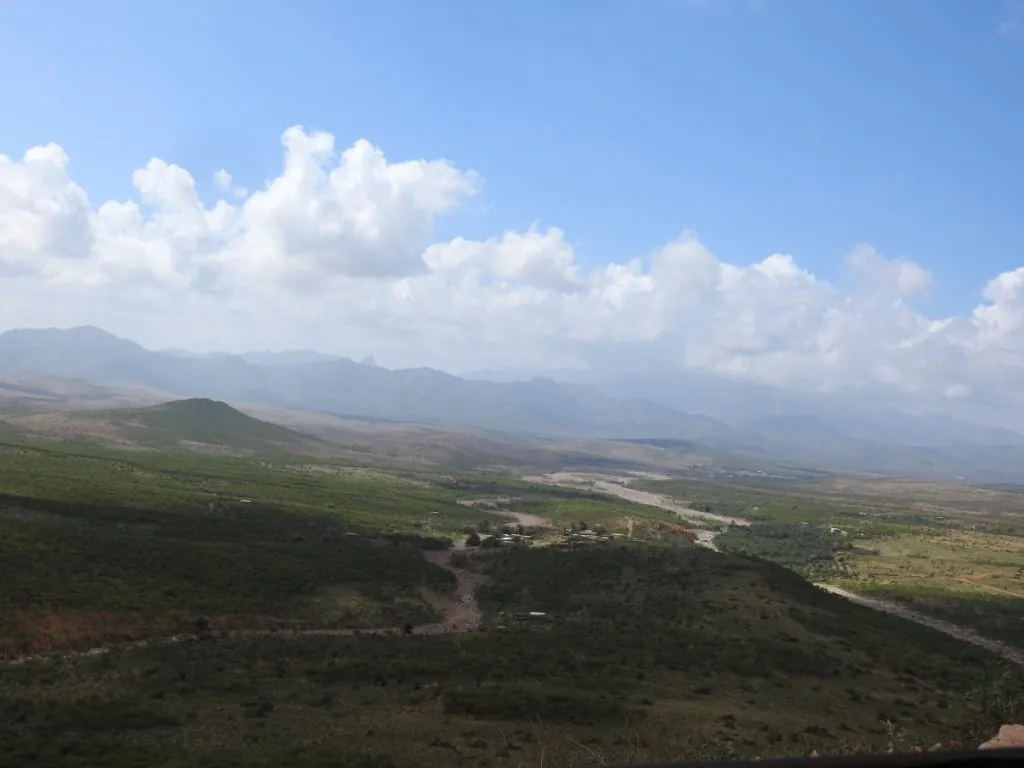
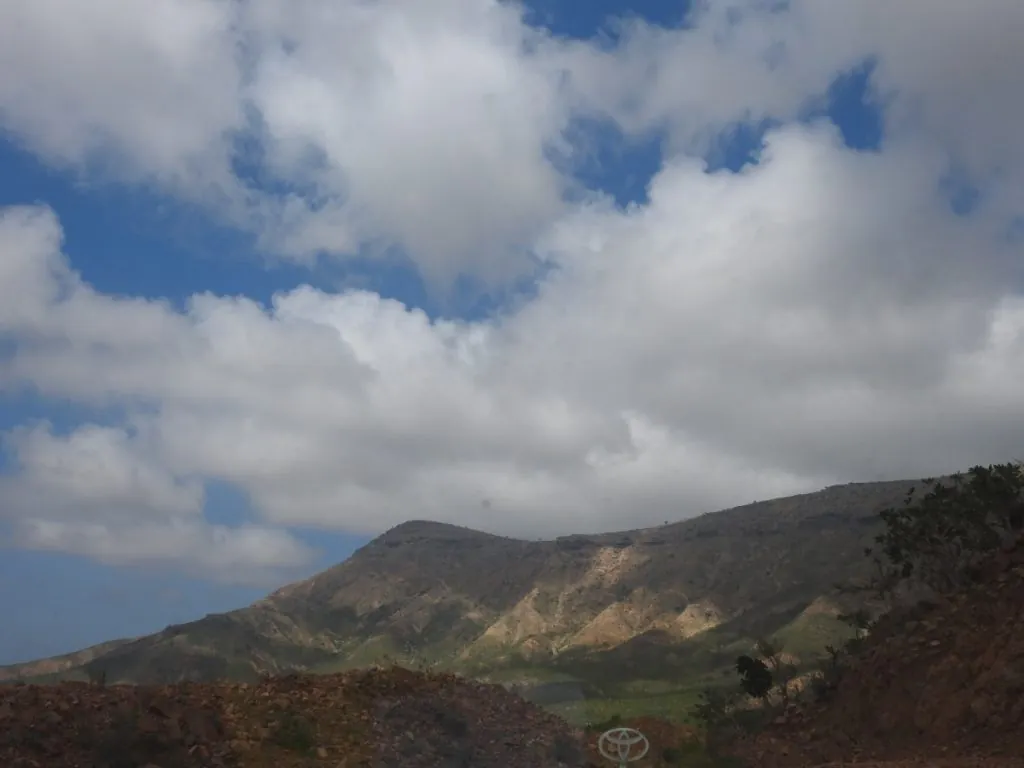
Photo stop at the funny desert roses, Adenium obesum socotranum, a plant that looks like a bottle and that's exactly what it is. When it rains, it collects the water in its thick succulent stem to get its moisture from there during the dry season.
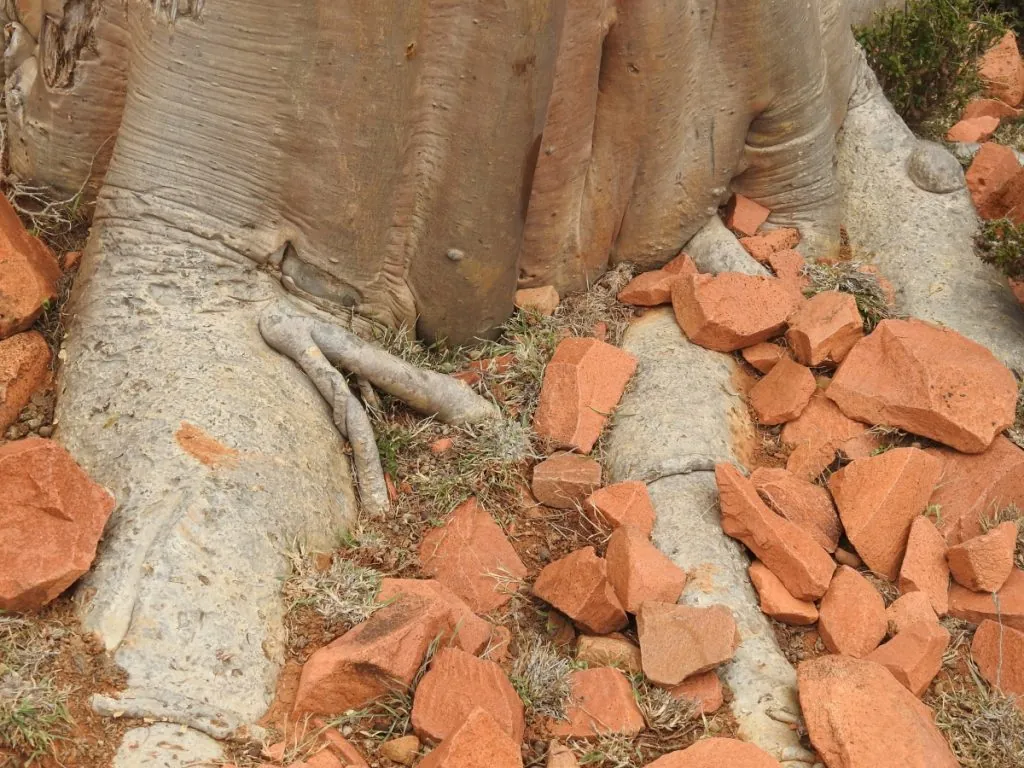
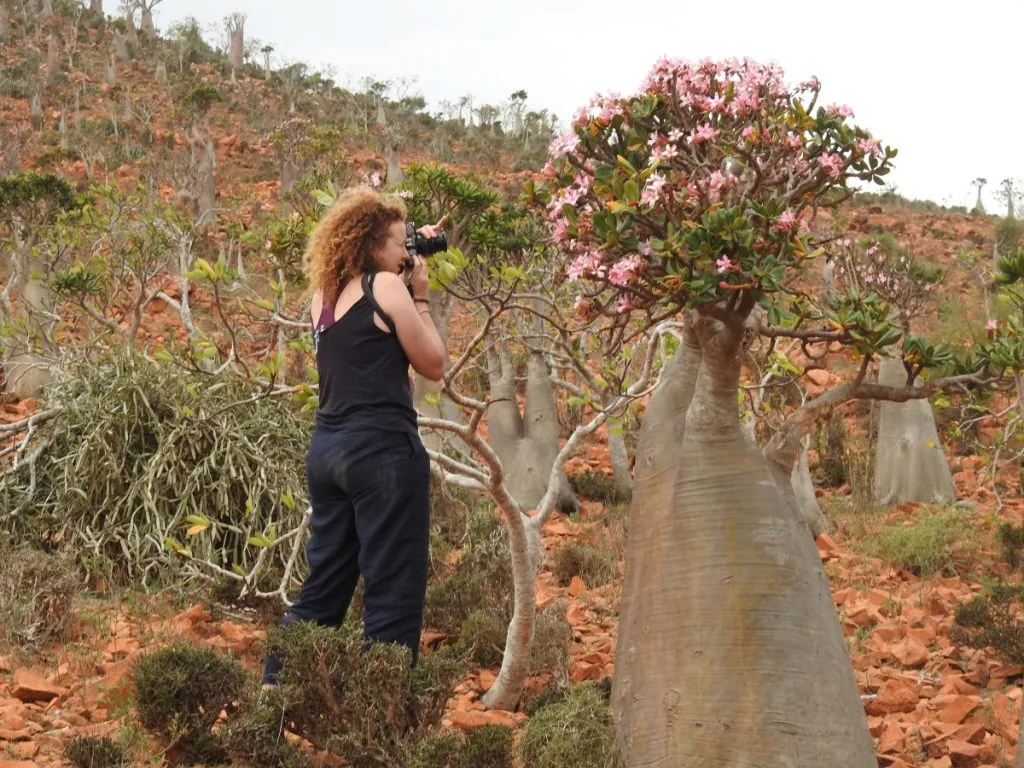
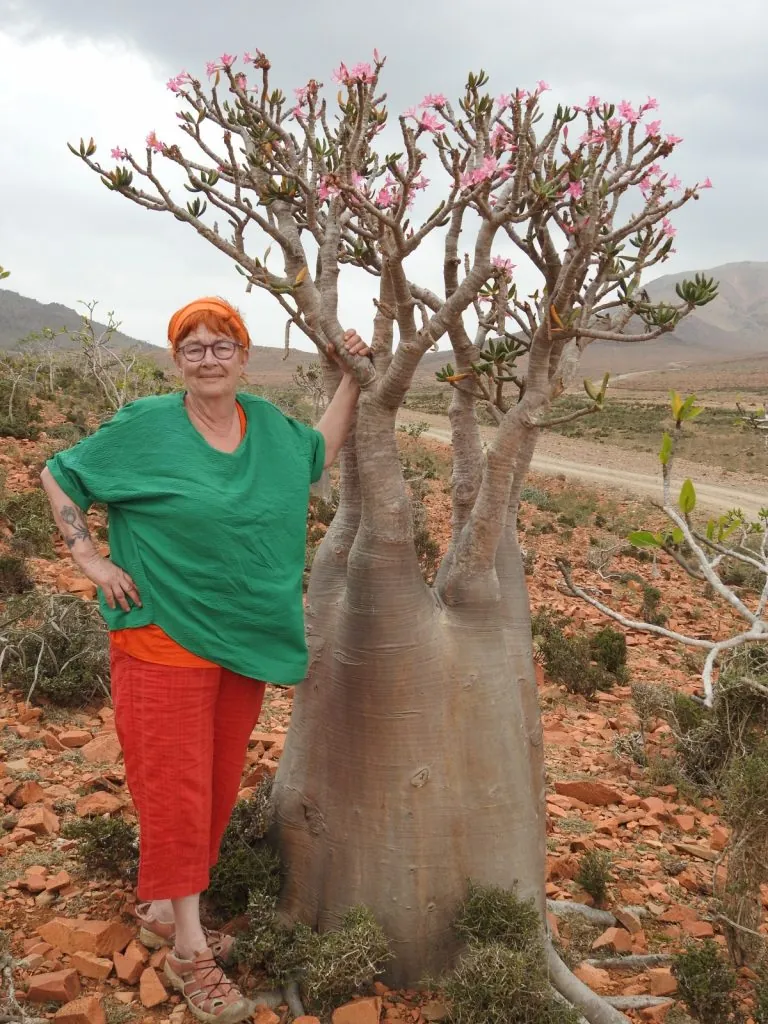
The flowering is actually a little later in the year but we were lucky. This particular species is endemic to Socotra and unique.
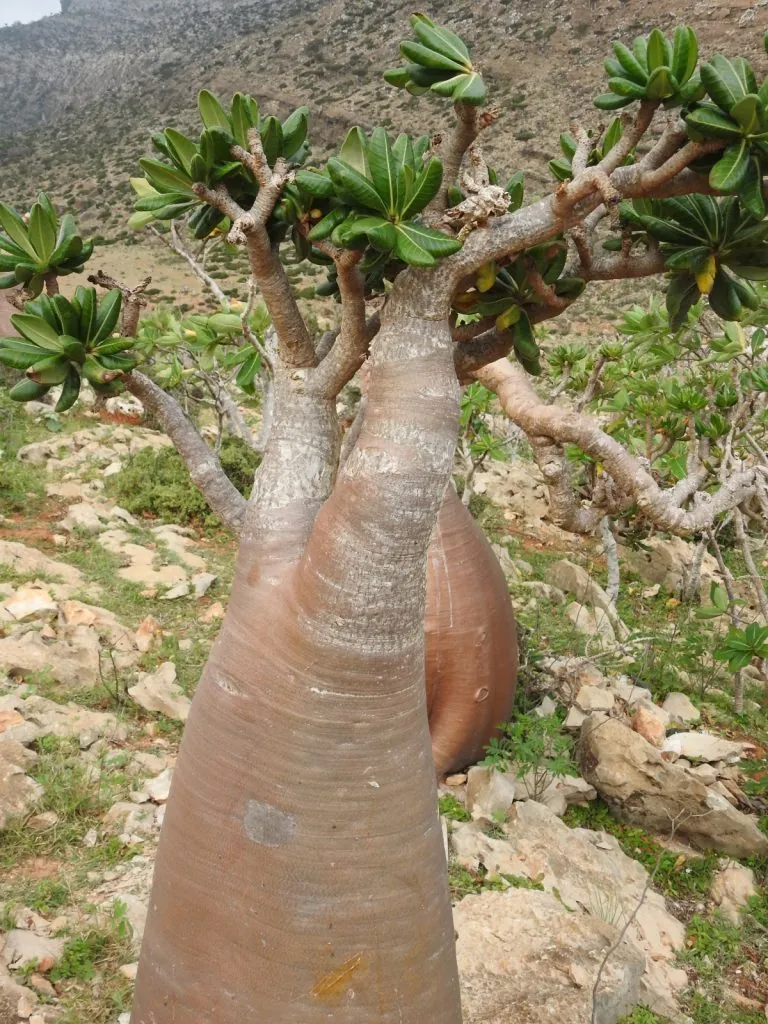
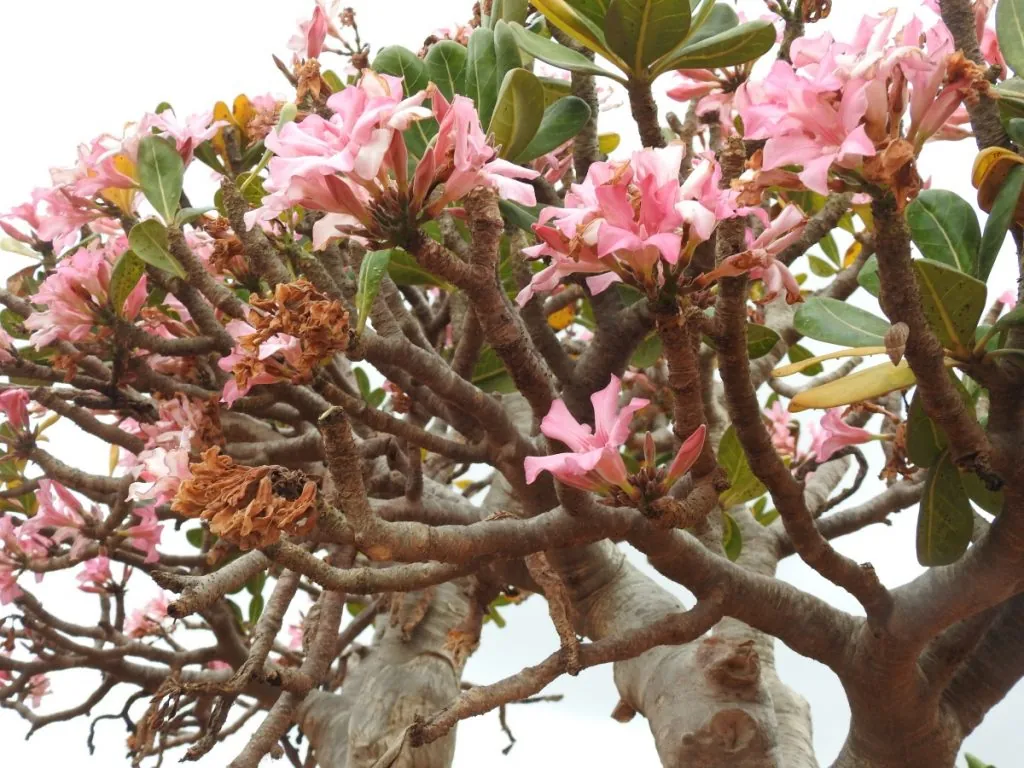
Our next campsite is on the edge of a valley, the wind is blowing hard and the tents are almost like flying kites!
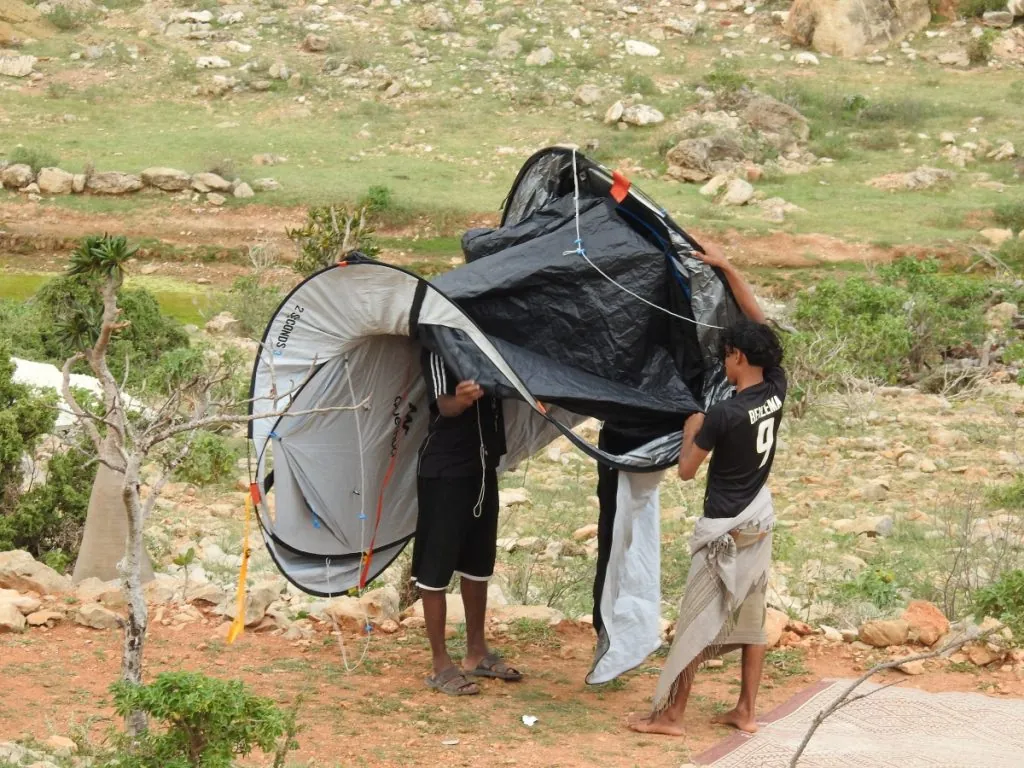
The hiking sandals go on, I grab my walking stick and we walk in the valley towards Homhil pool, a trip that takes just over half an hour.
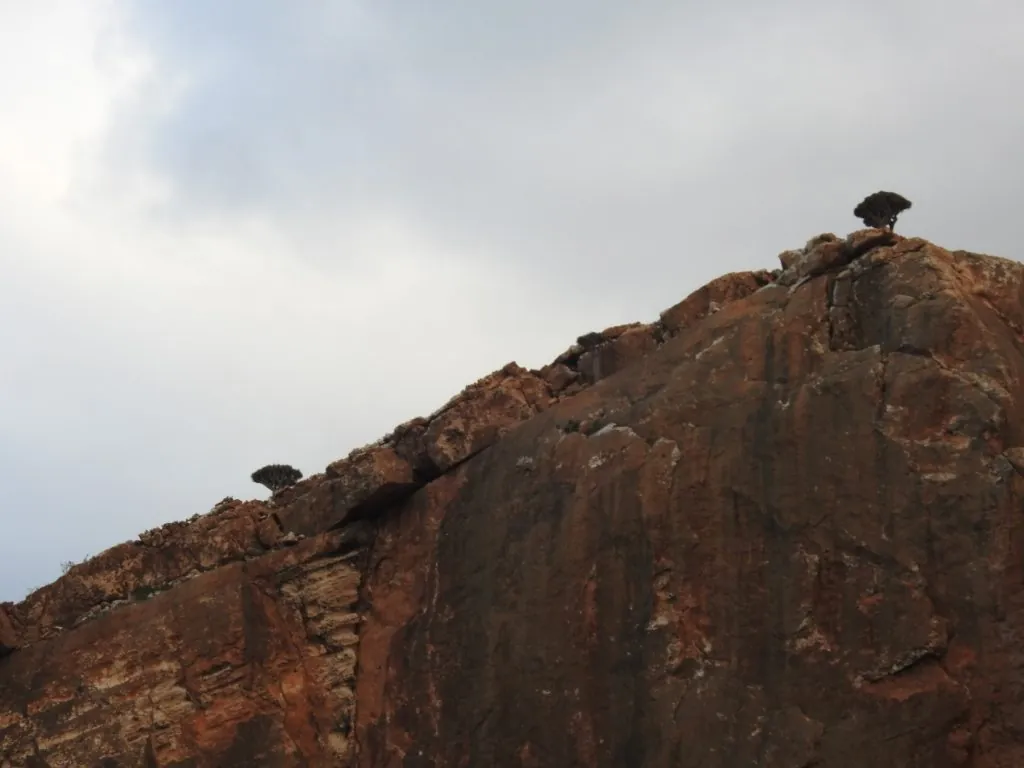
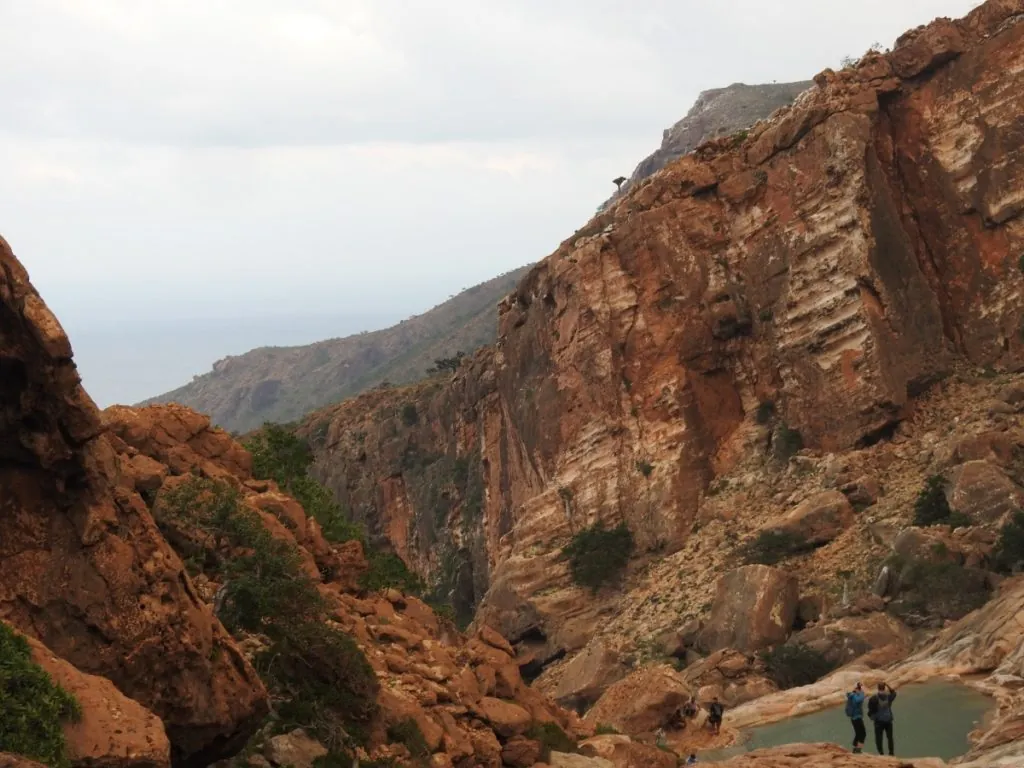
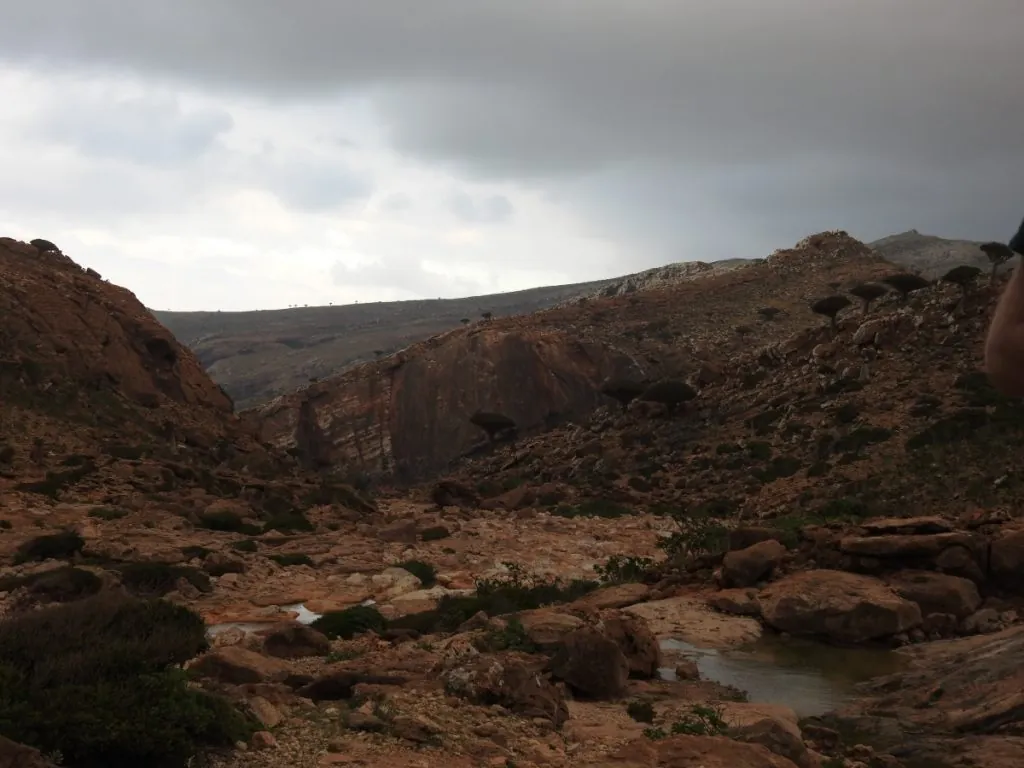
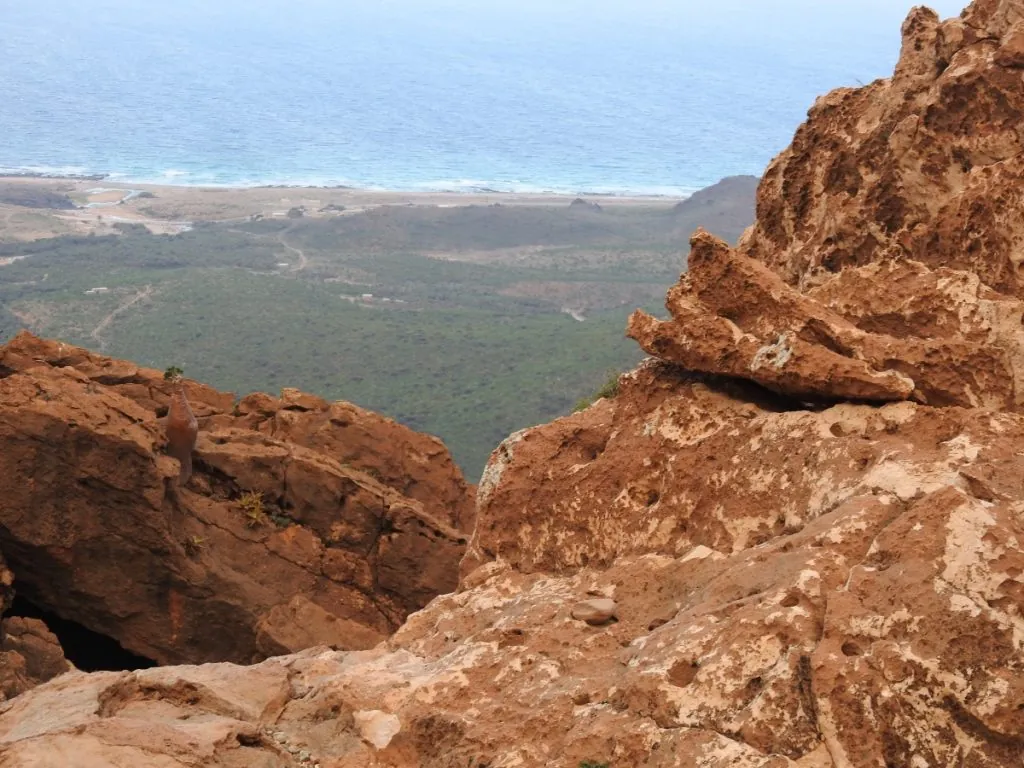
Homhil is a nature reserve, many species of both flora and fauna are endemic. Cucumbertree, Dendrosicyos socotranus is one of these species that is endemic, meaning it only grows in the wild on Socotra.
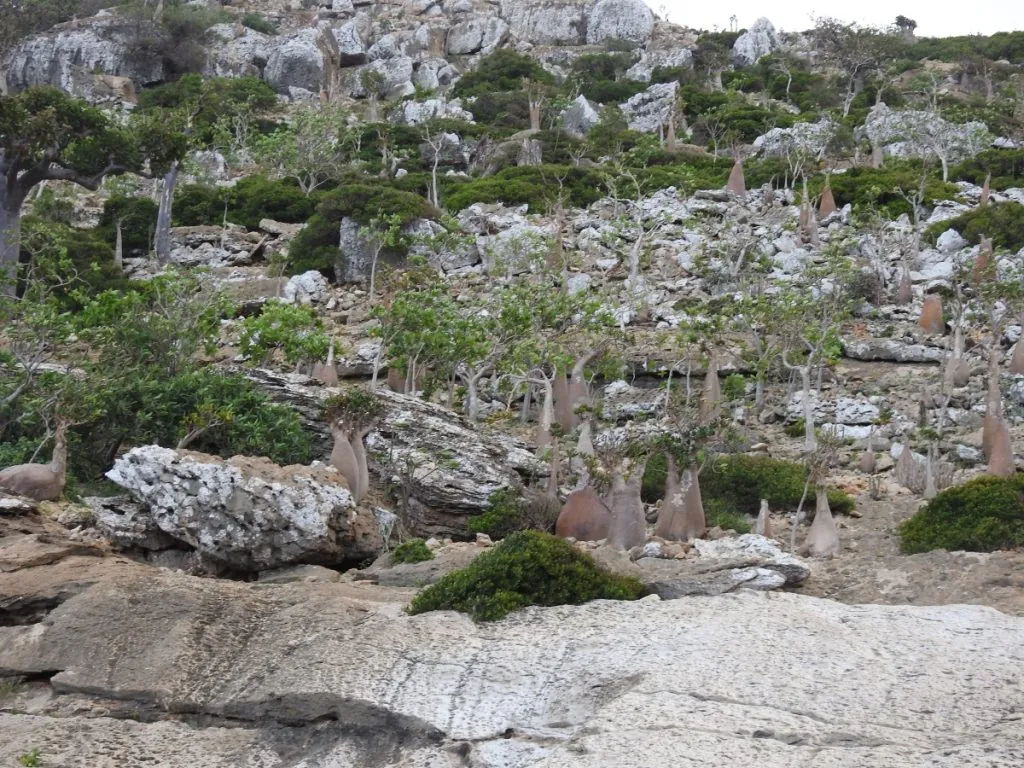
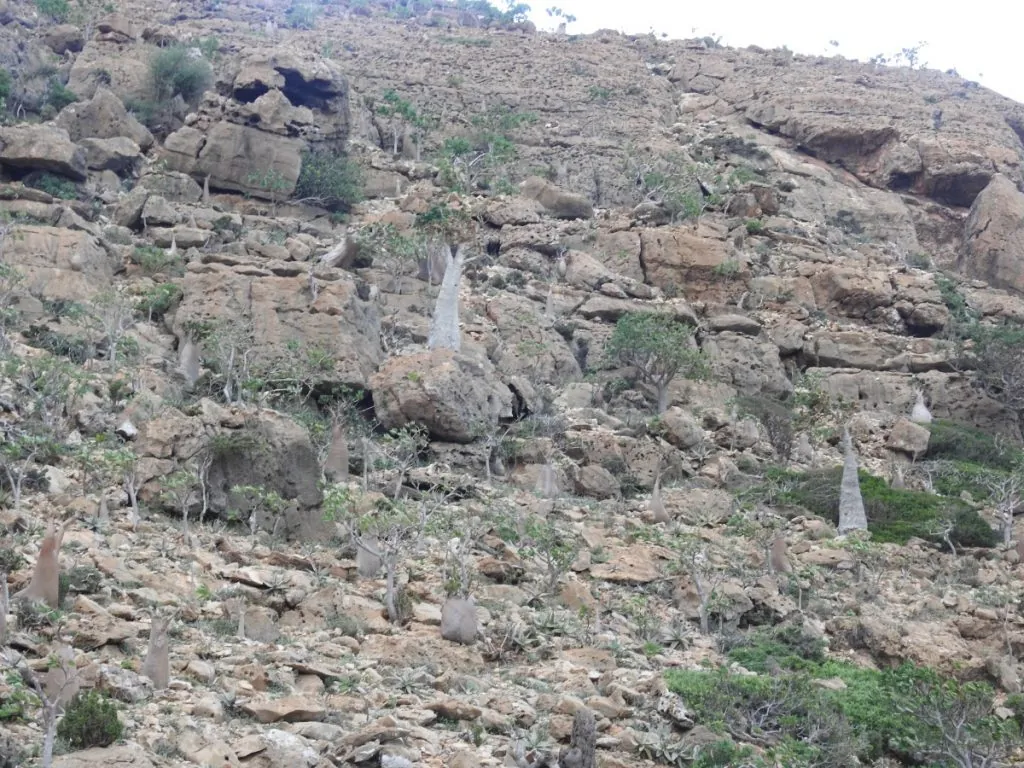
It is a tree that can grow between 3-5 metres high, it collects its moisture in the thick trunk. The flowers are orange-yellow and the fruits oval. Nature has indeed created its seedlings to survive during severe drought.
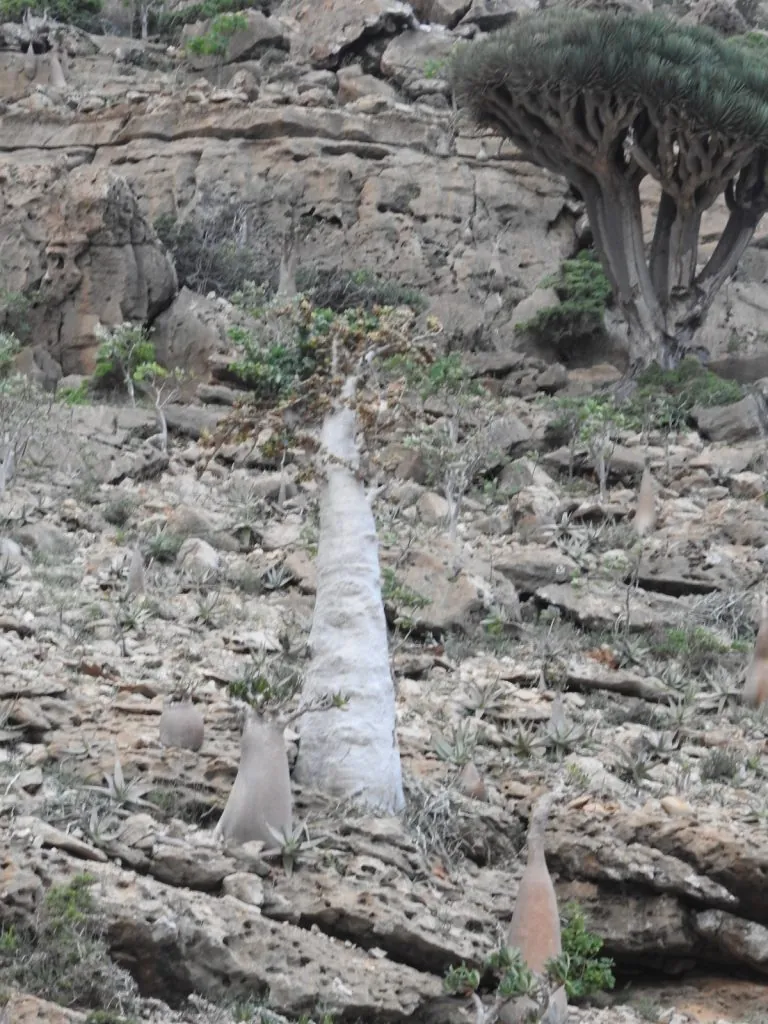
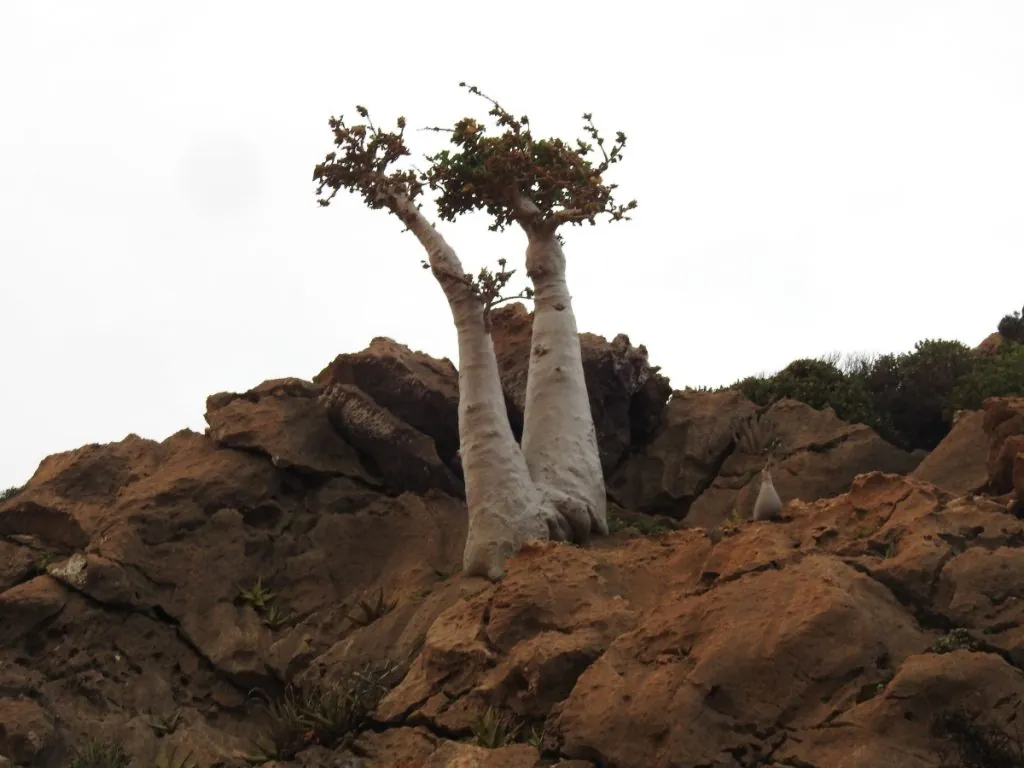
Of course, we come across the Dragon's Blood tree which is perhaps the most typical of Socotra, more on that later.
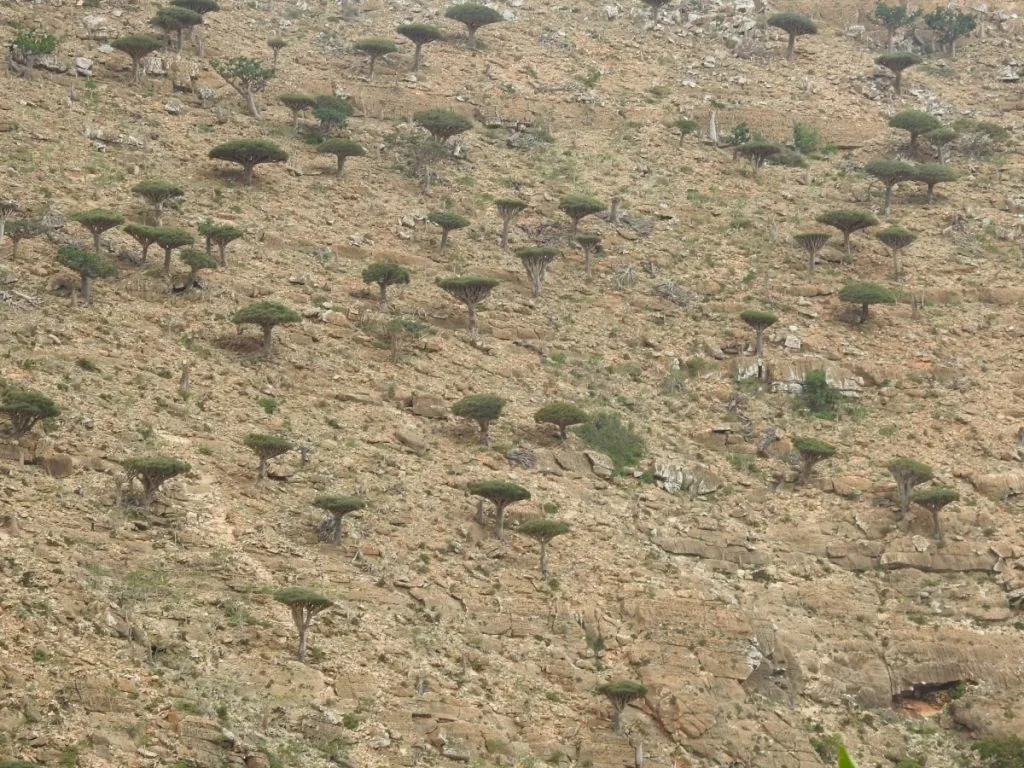
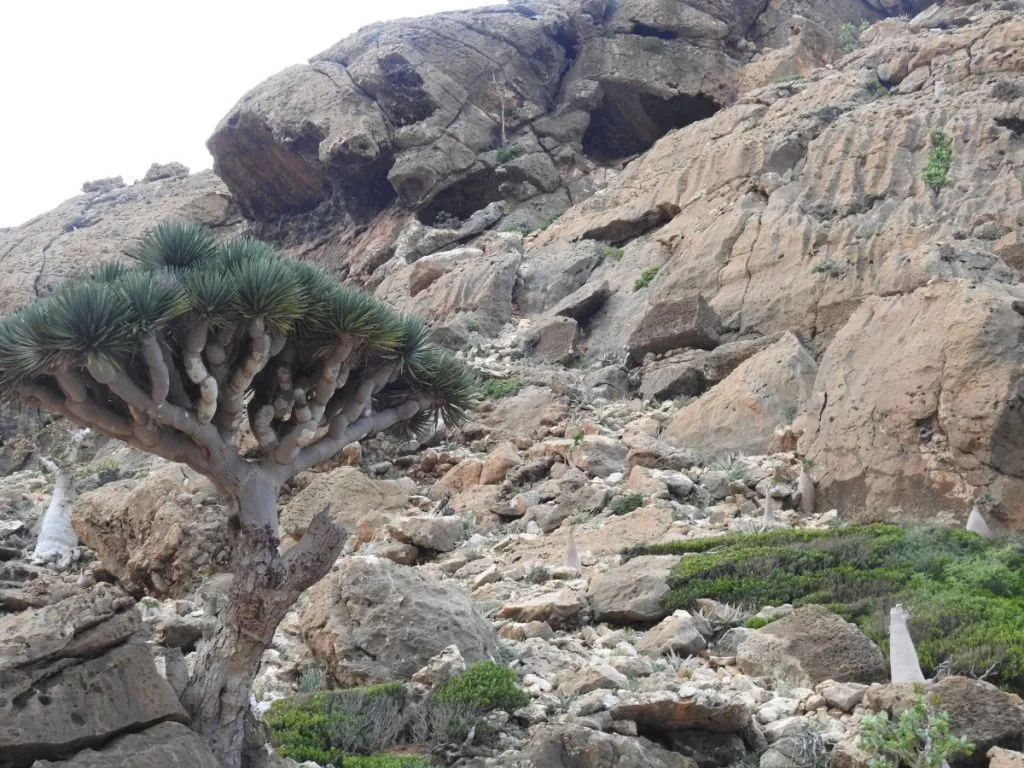
The water is green-turquoise, the natural pool is deep and cold. Of course you can take a dip or just chill out.
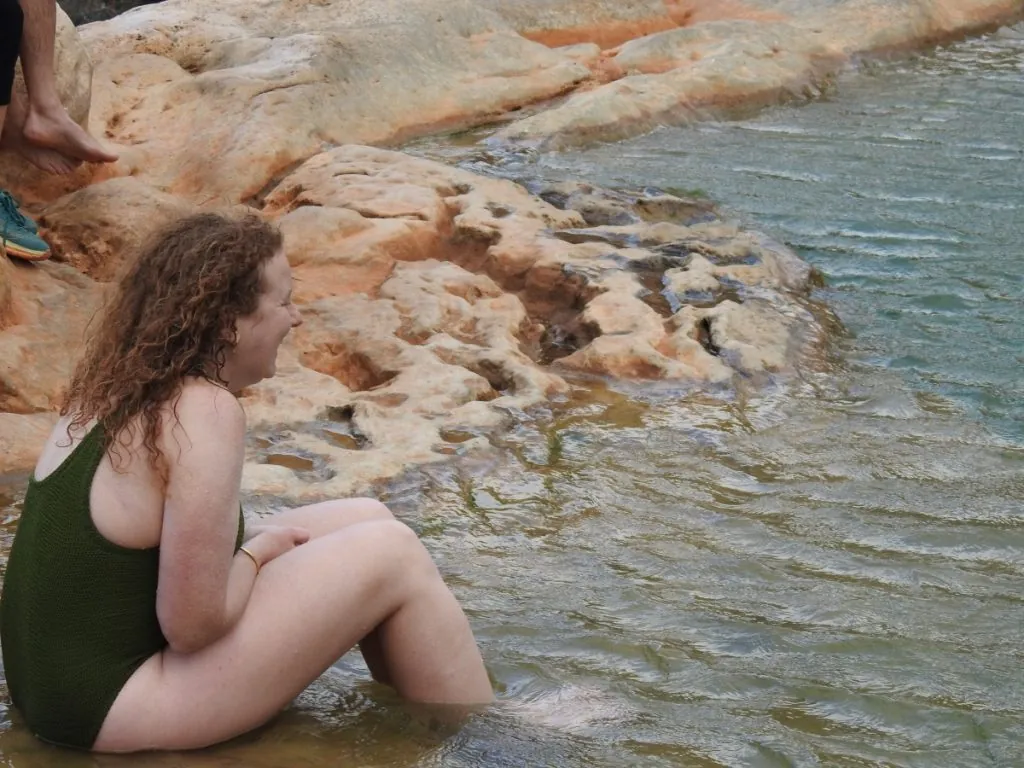
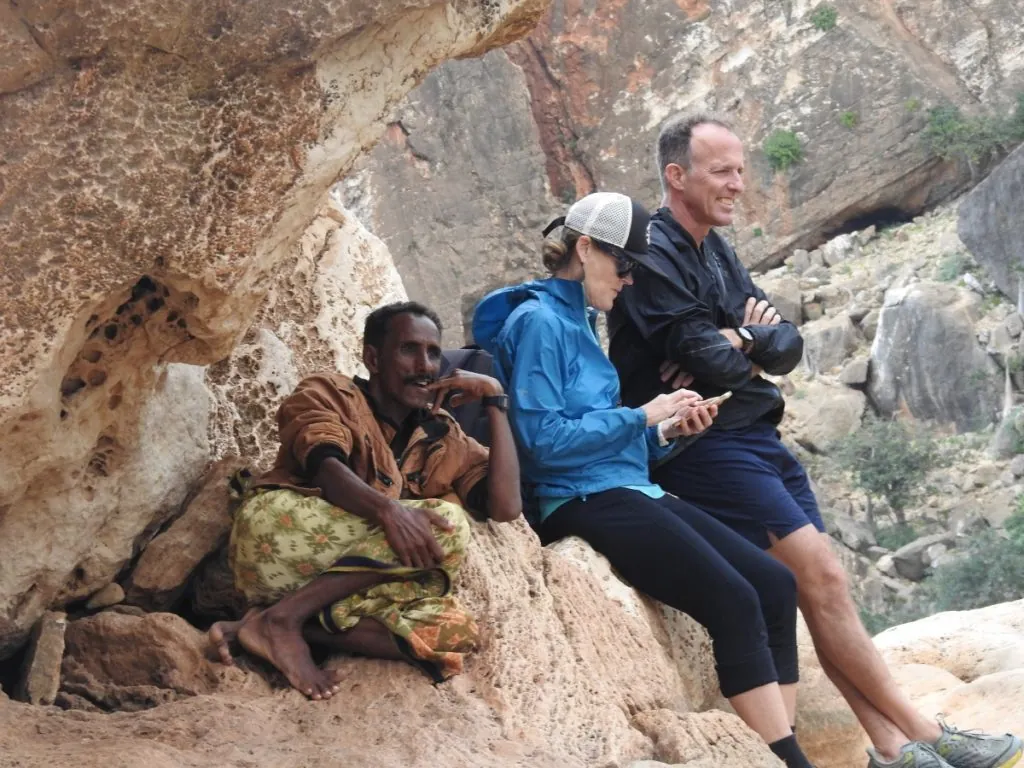
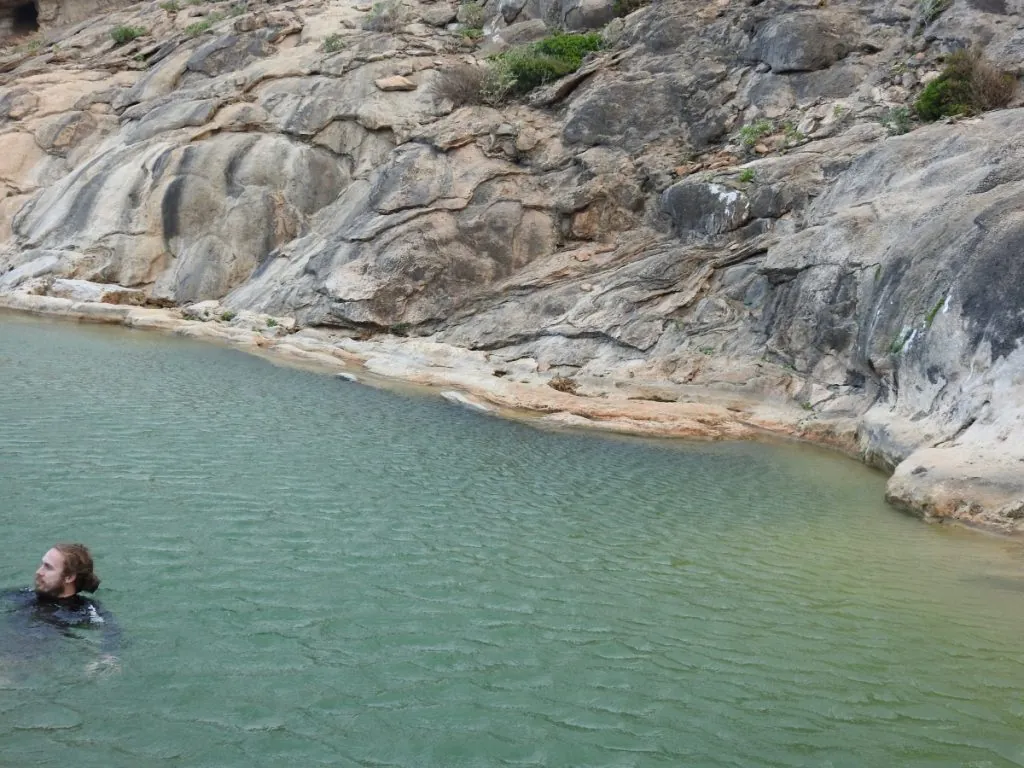
In the smaller pools we find freshwater crabs.
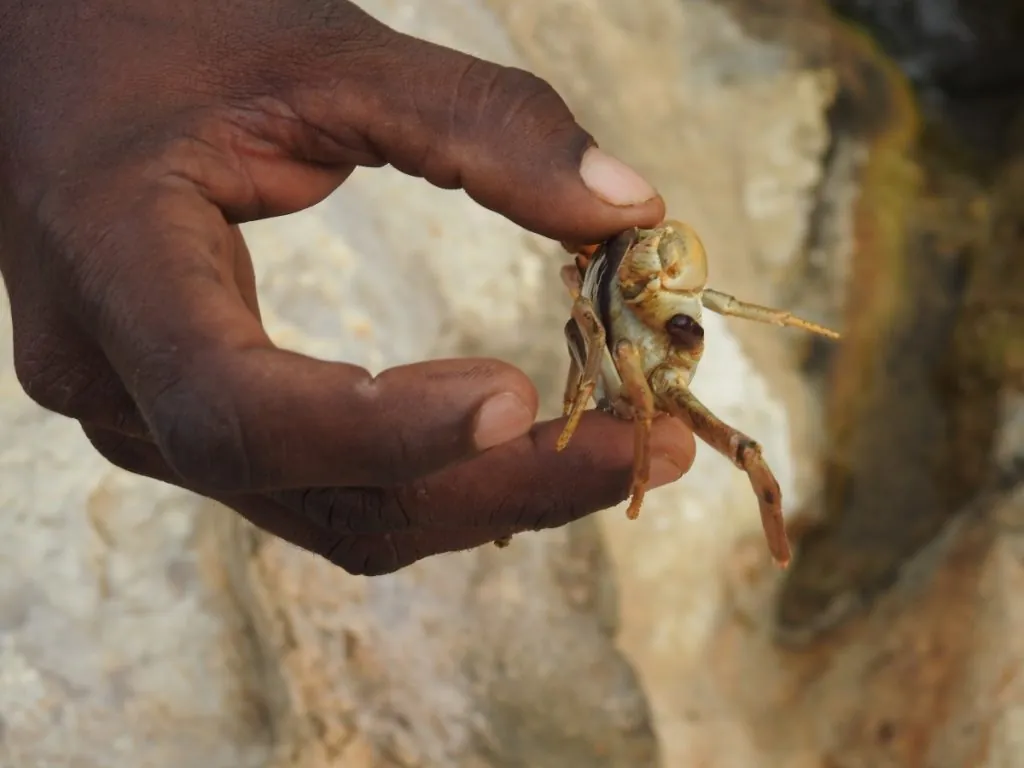
Evening came and our tents almost blow away, our great team moves the tents to the covered dining area and we can sleep well for another night.
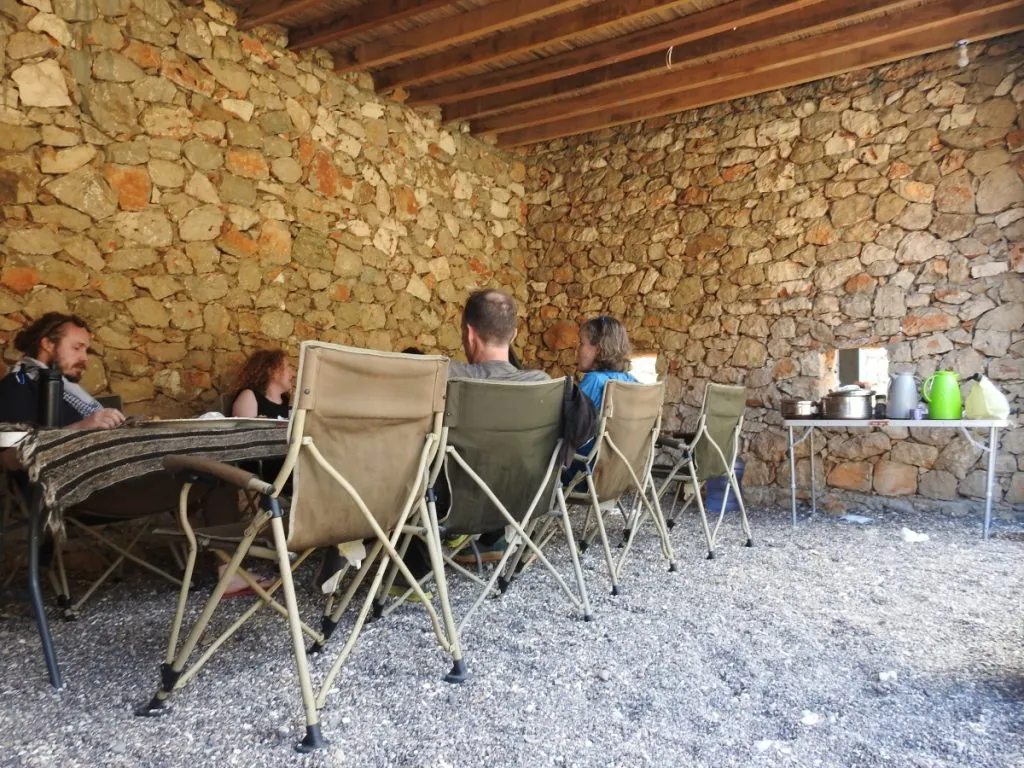
Day 4: A new day with new experiences...
Kilisan wadi. Wadi, means ravine and down in the ravine are the largest natural pools on the island.
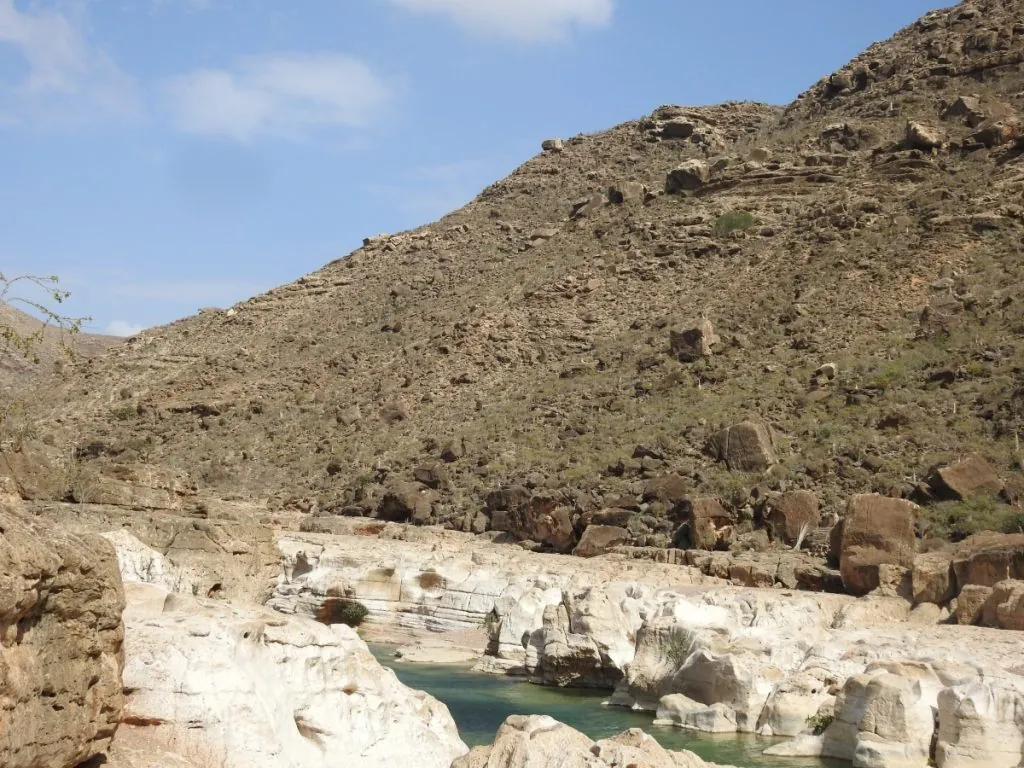
The journey there, well it was on roads that were straight out of a better Indiana Jones film.
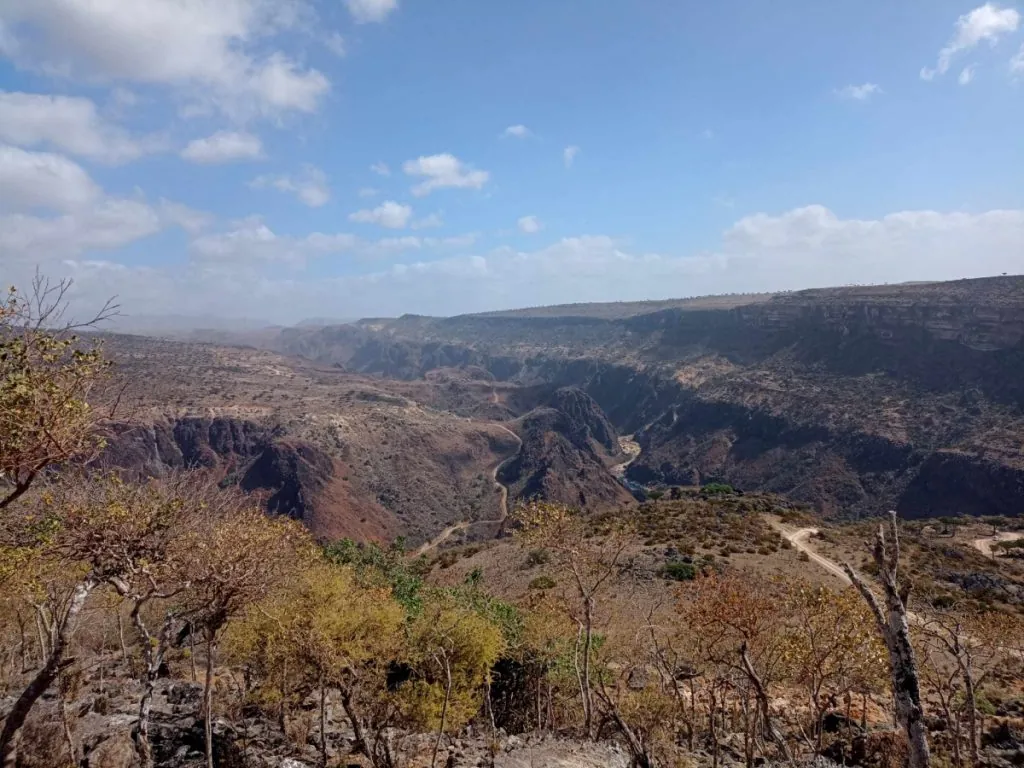
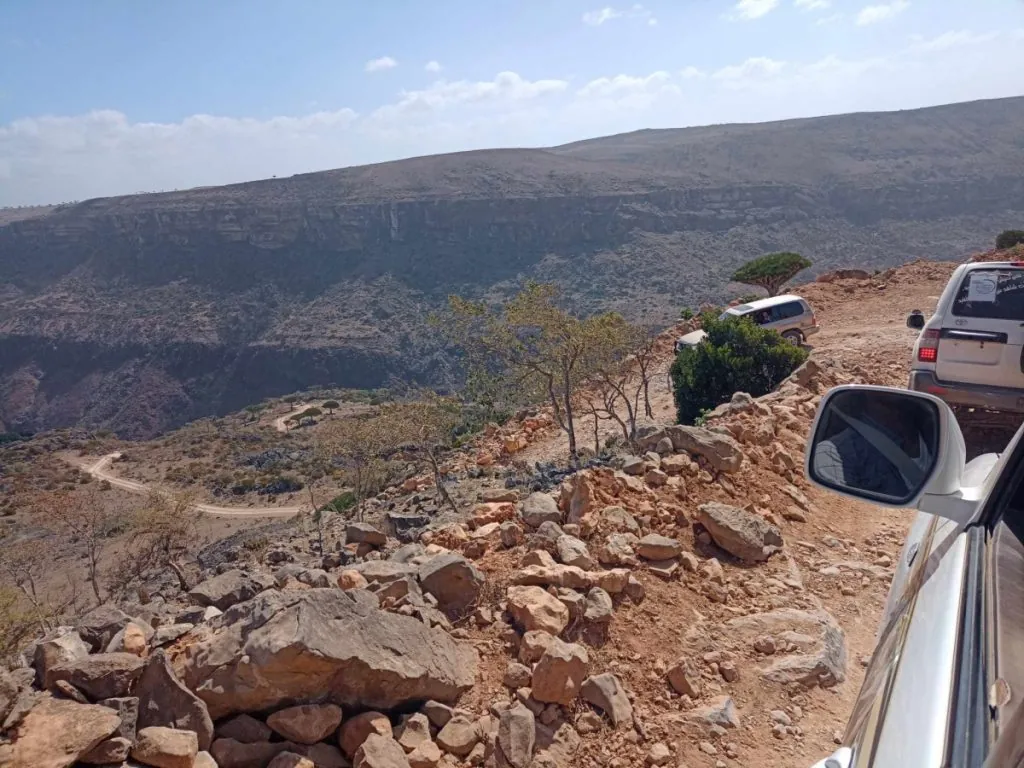
The hike down to the gorge itself looked like I wouldn't make it, at least not back, but you have to push your limits. Again.
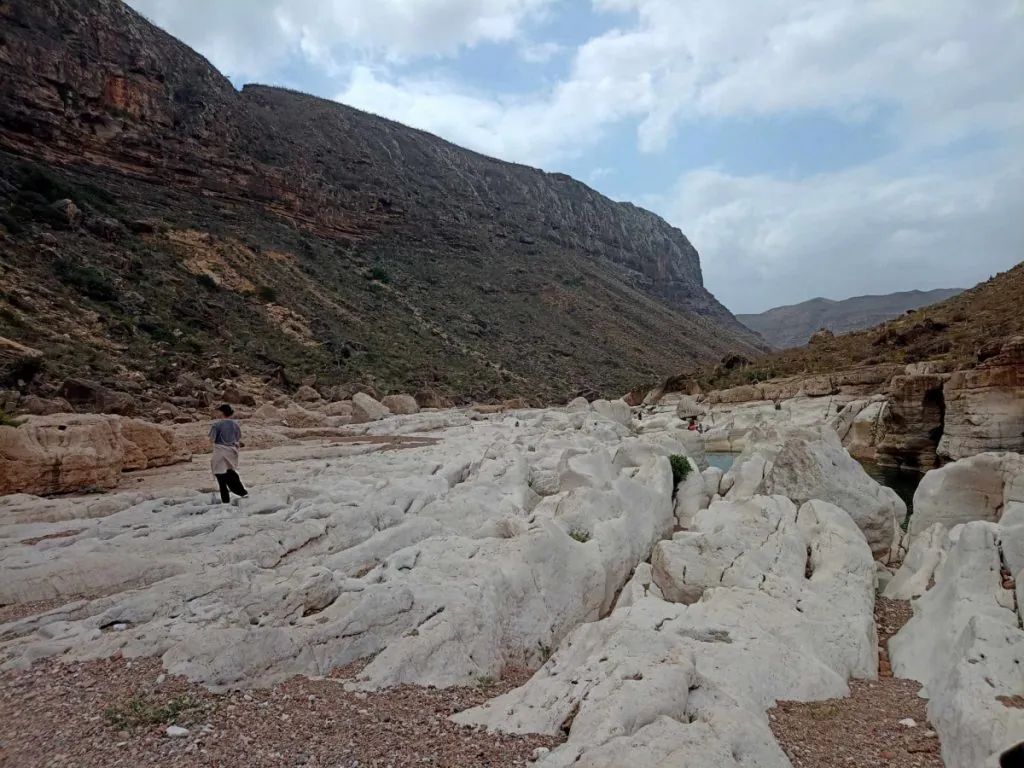
With the help of the walking stick and a helping hand from Abdullah, I descend, admire the extremely turquoise-green deep pools, put on my swimsuit and get into the cold water that refreshes me. The limestone is as soft as velvet, honed over thousands of years by wind and water.
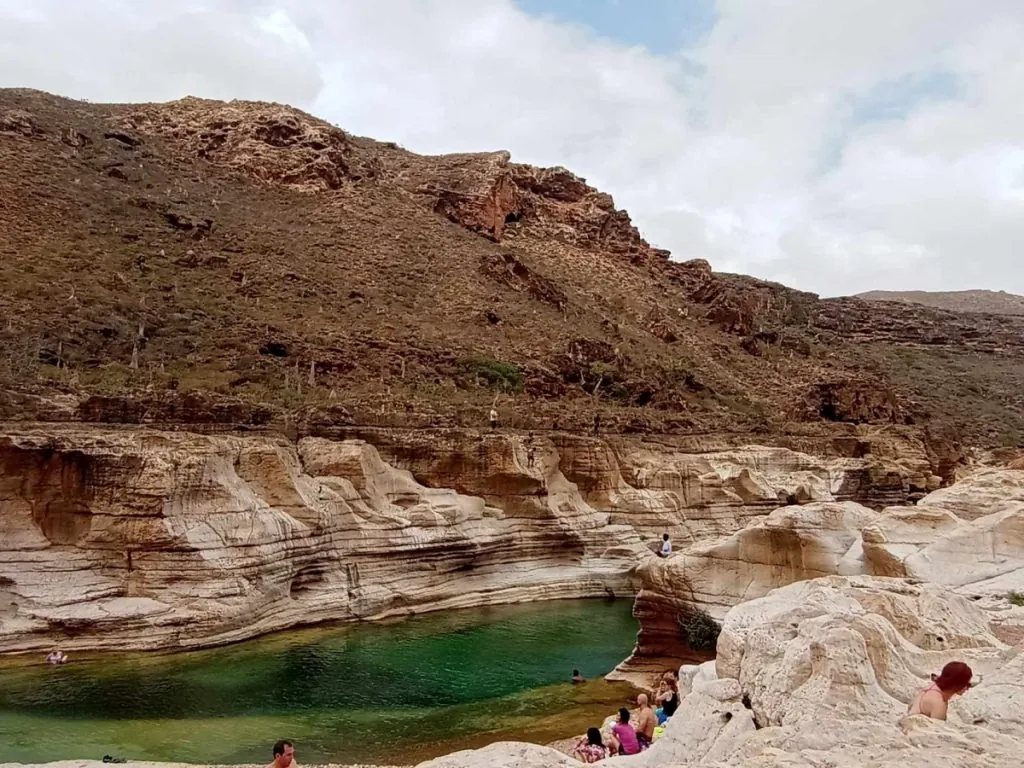
Young people from neighbouring villages jump from the high cliffs, some climb like a spider on the vertical white limestone walls.
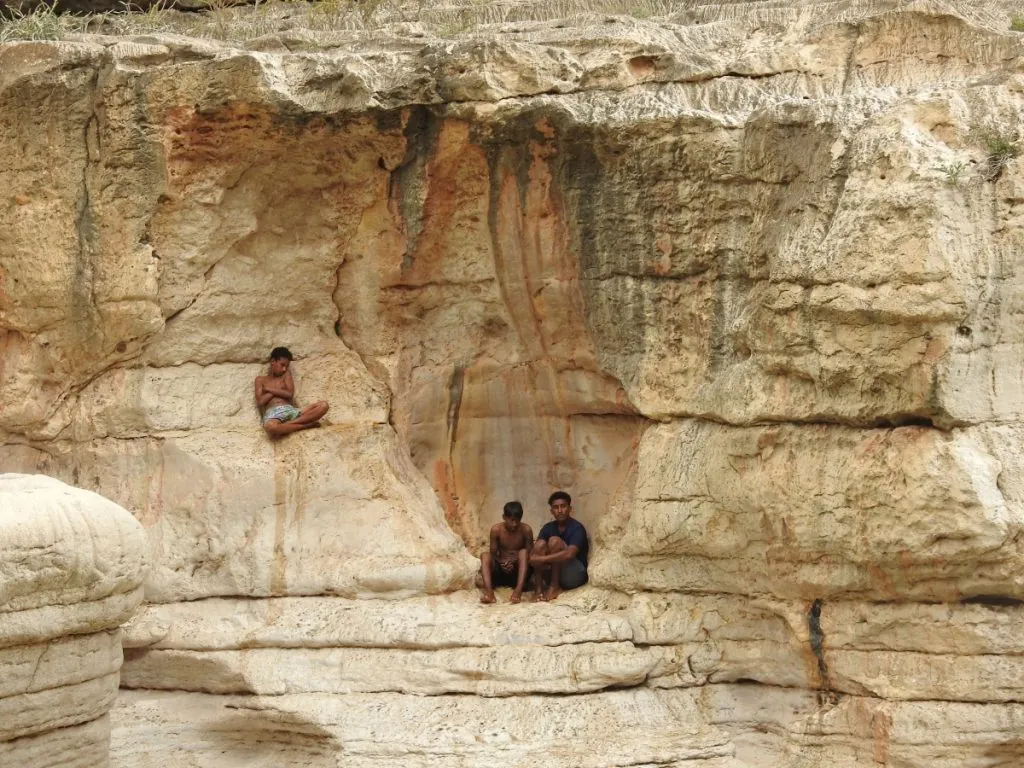
Back... hmmm, I'd be lying if I said it was easy, but up I came. Lunch was taken in a conteiner.
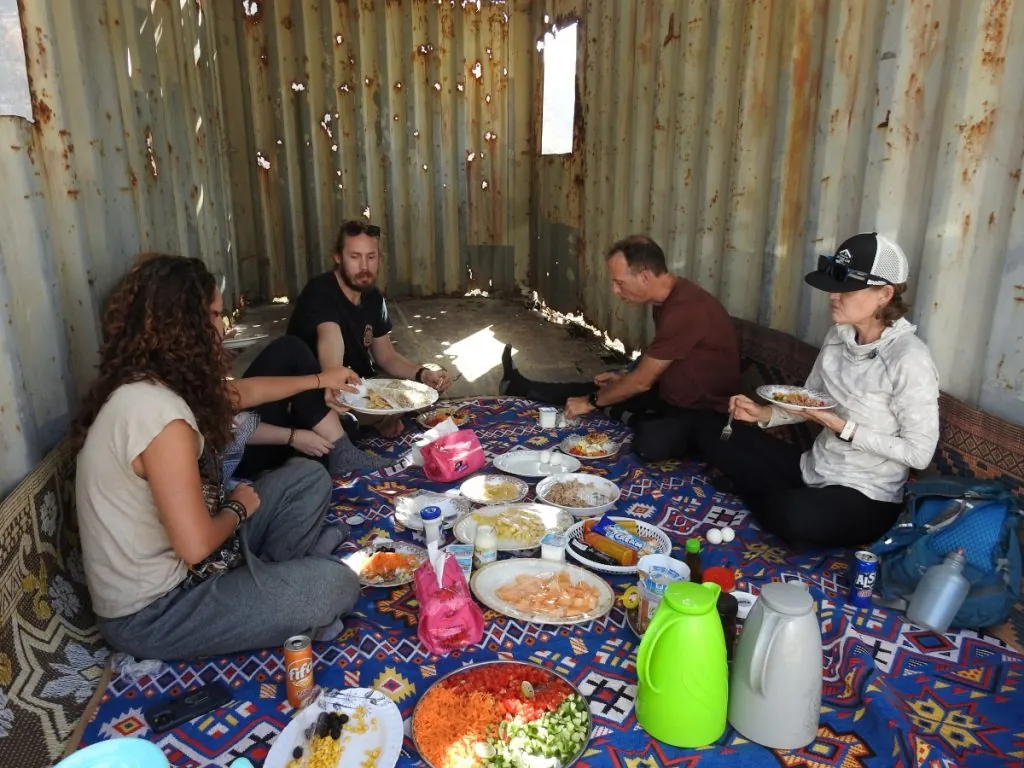
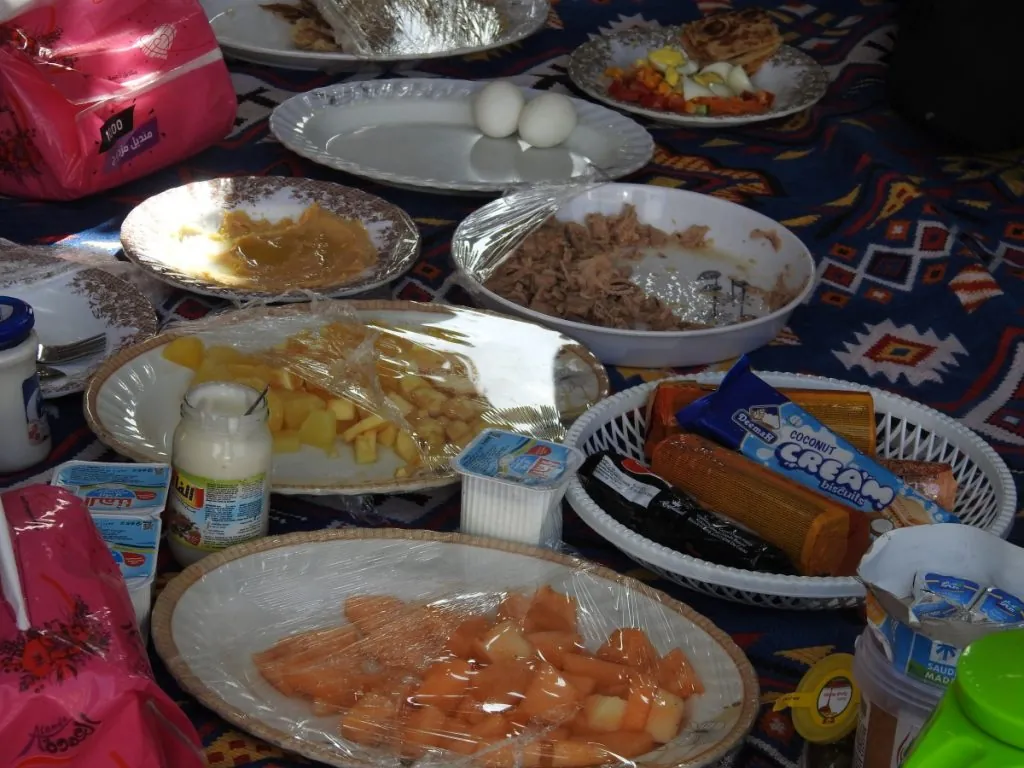
And there are the children again, other lovely, curious mischievous children.
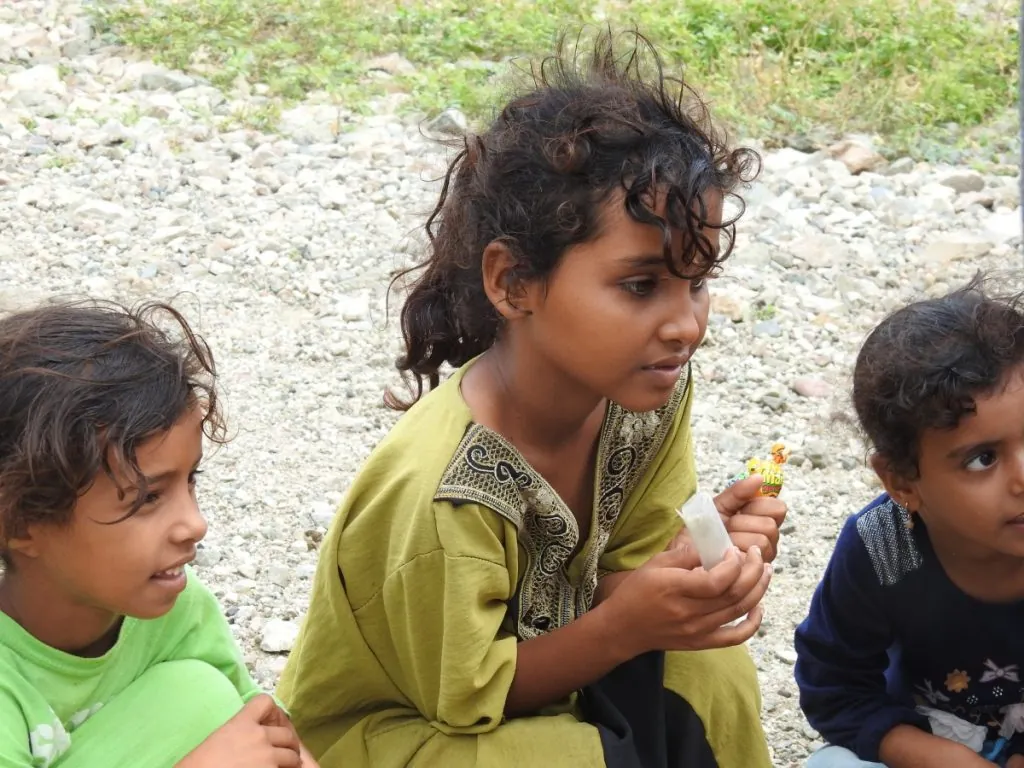
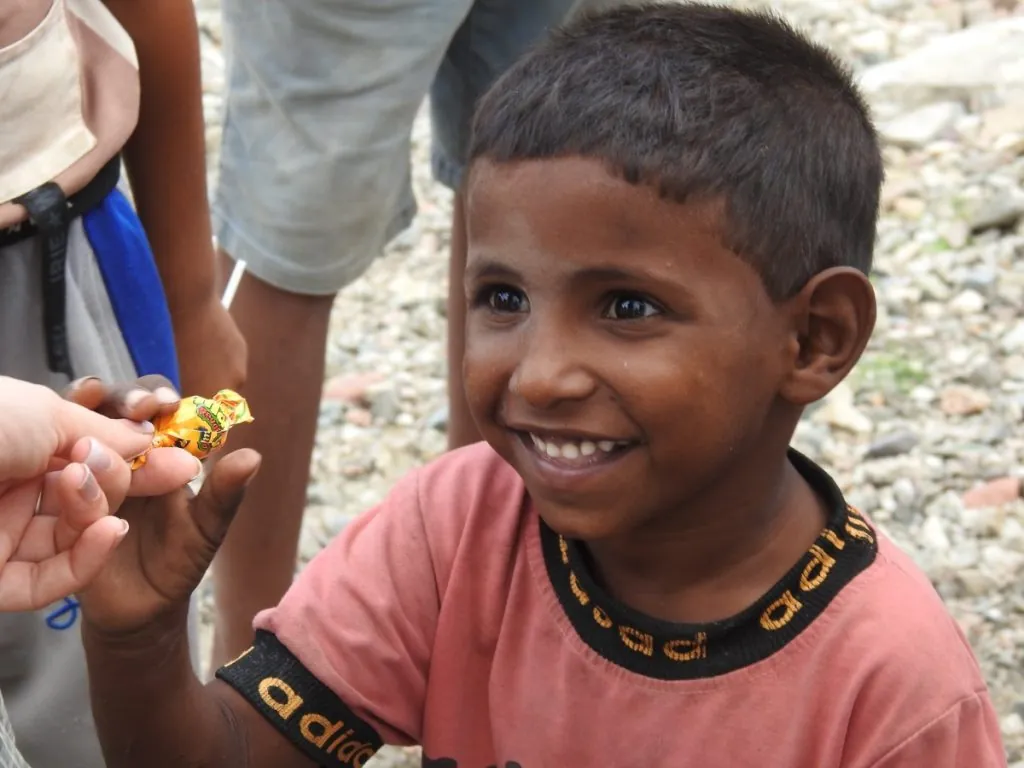
The beautiful man ...
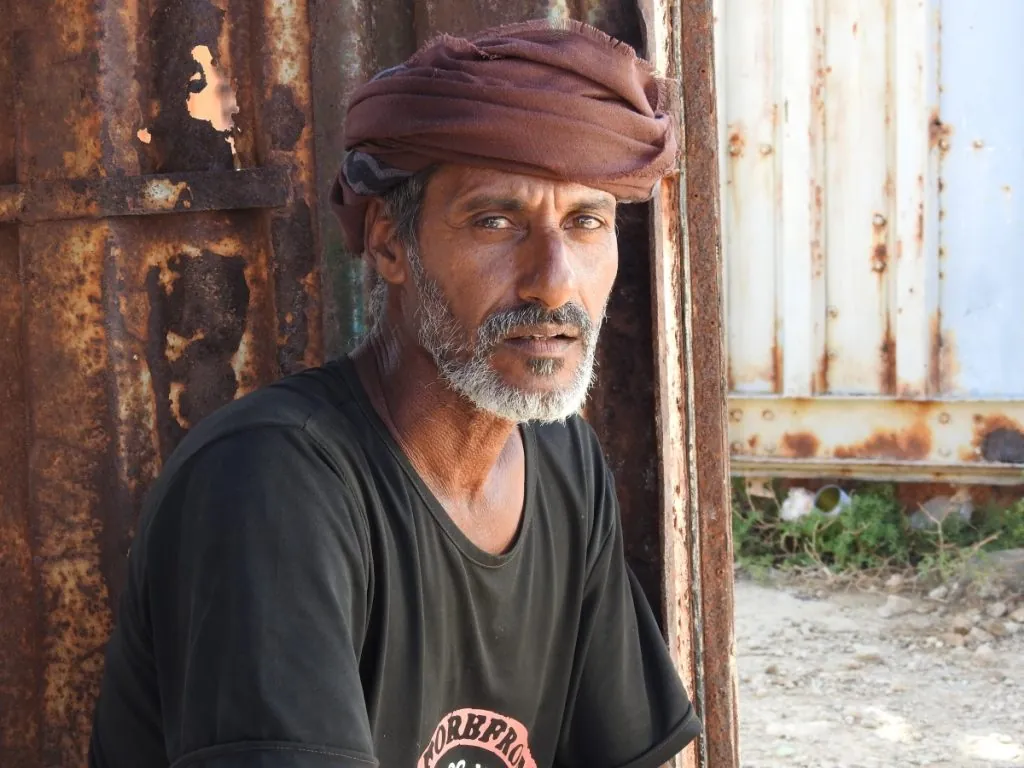
We continue on these winding roads and end up at the huge sand dunes, Sahek dunes.
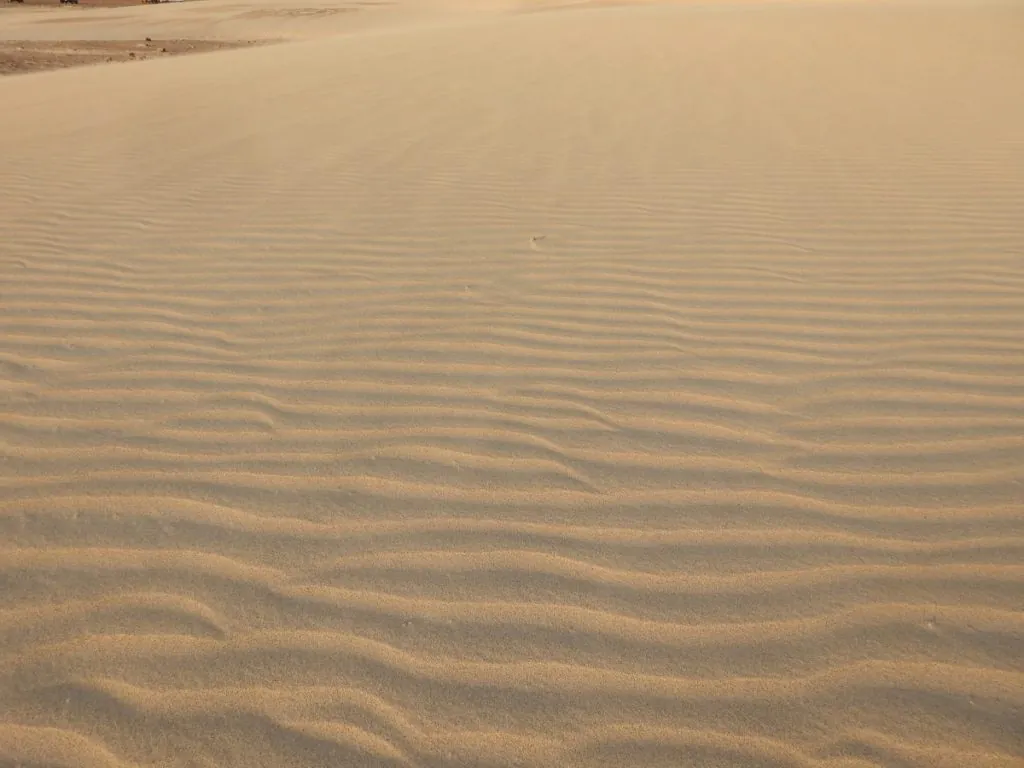
On one side the beautiful mountains that change in blue-purple and far away the sea is glimpsed.
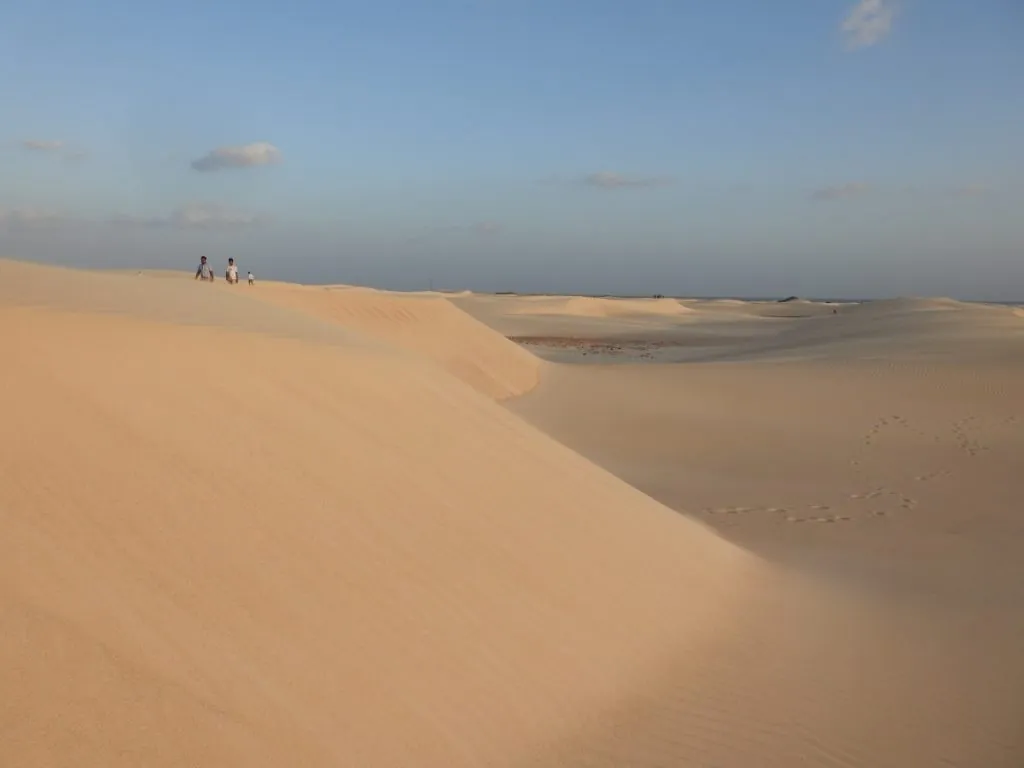
Those who are keen can go for a ride, if only for some photos.
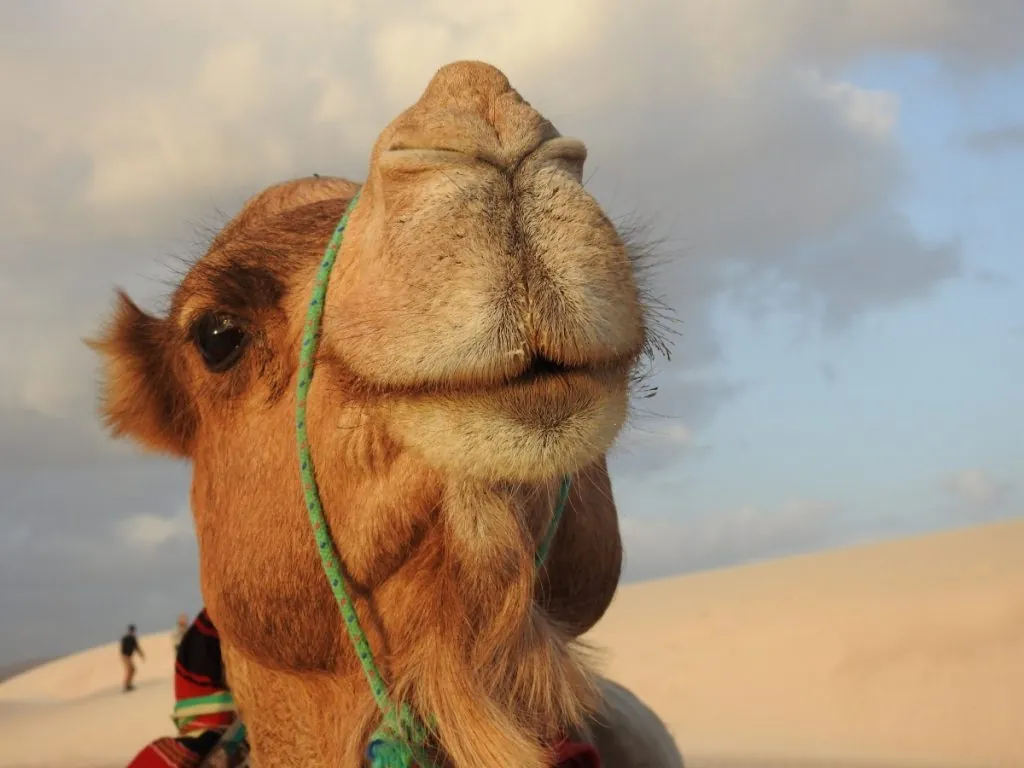
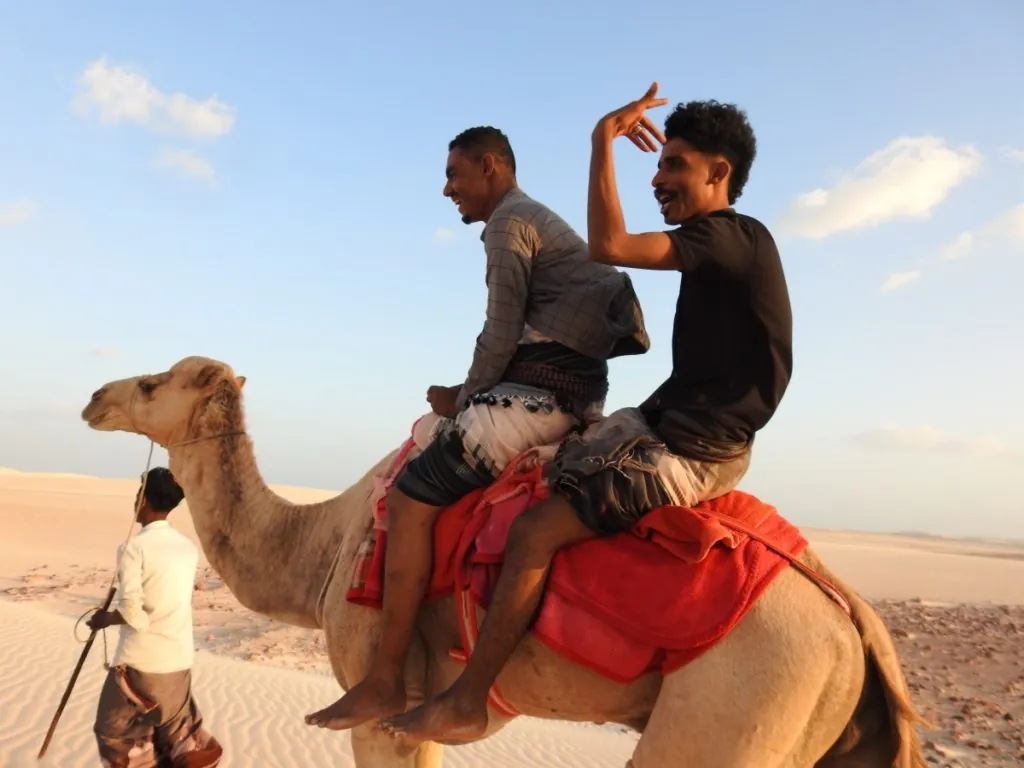
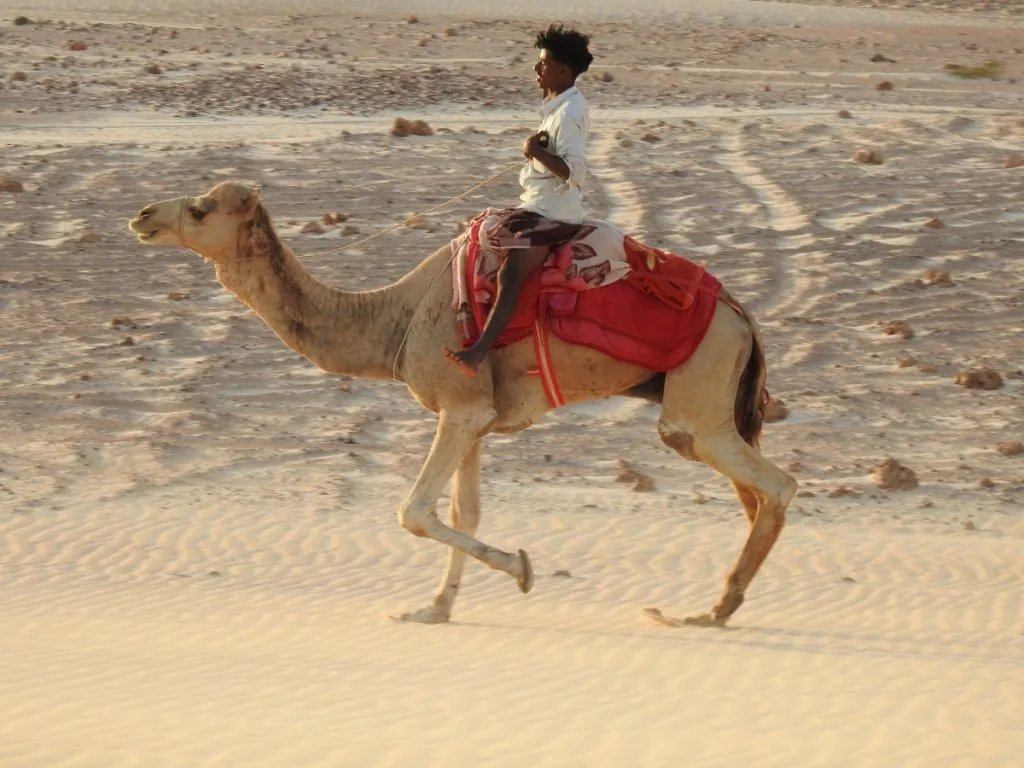
Camels are not only used for milk and transport, they also do some extra work in tourism. For 10 dollars you get a ride over the dunes.
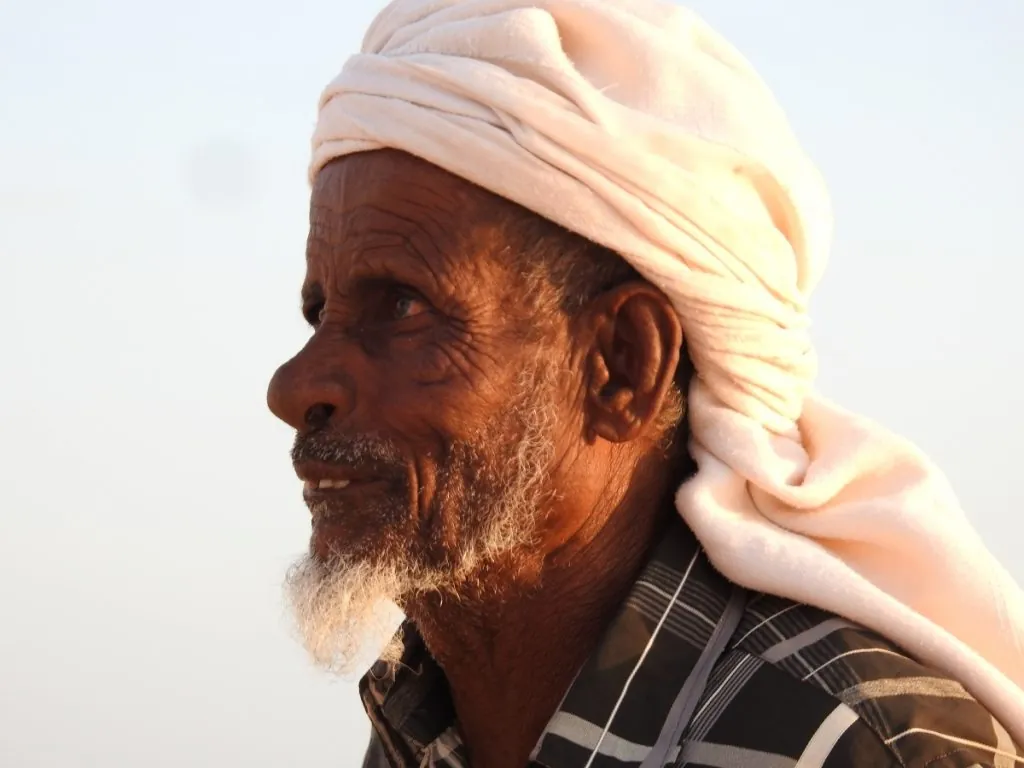
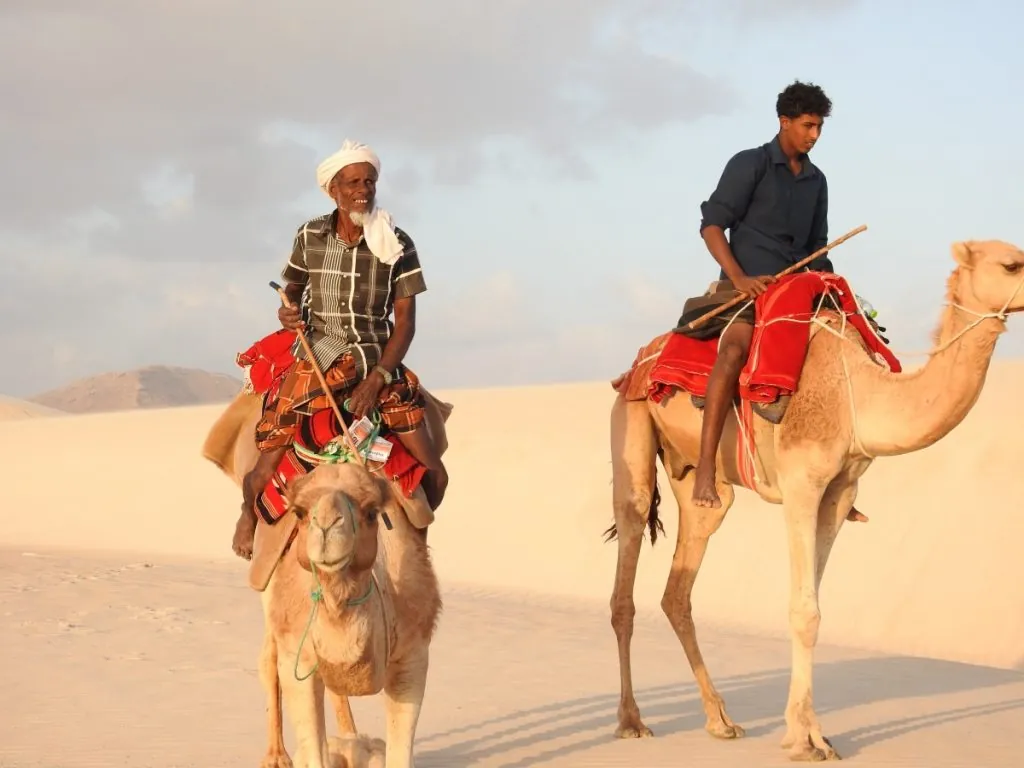
It is sunset that we enjoy sitting on the chalk-white soft hills.
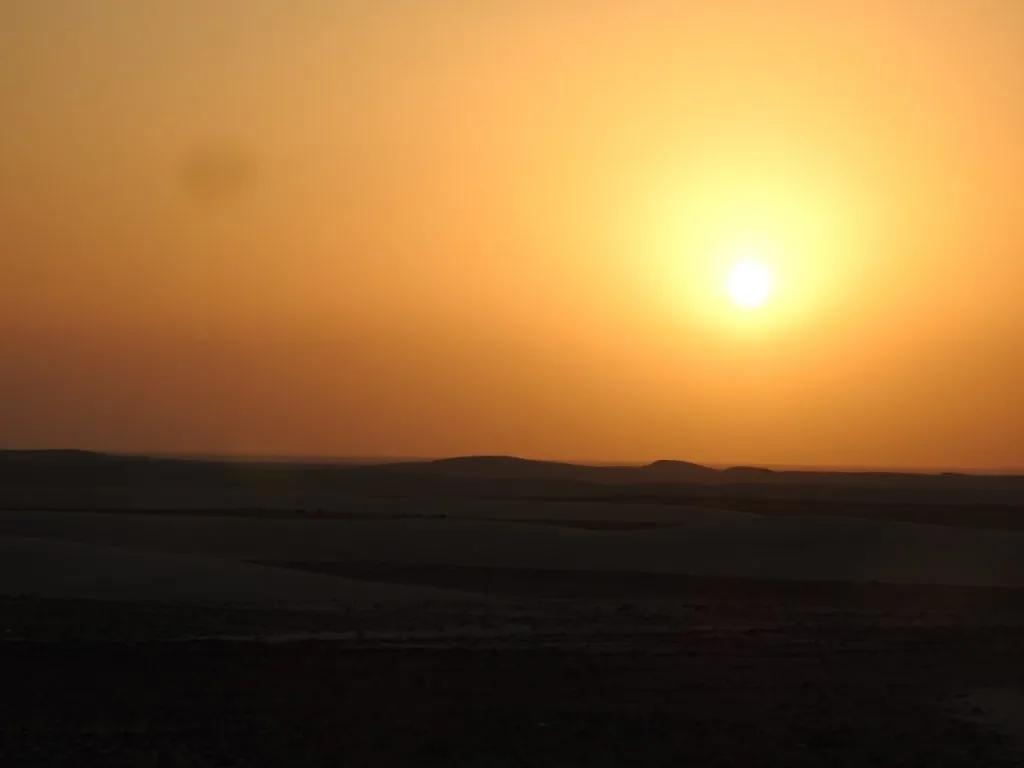
A new camp, a new lovely dinner and early evening.
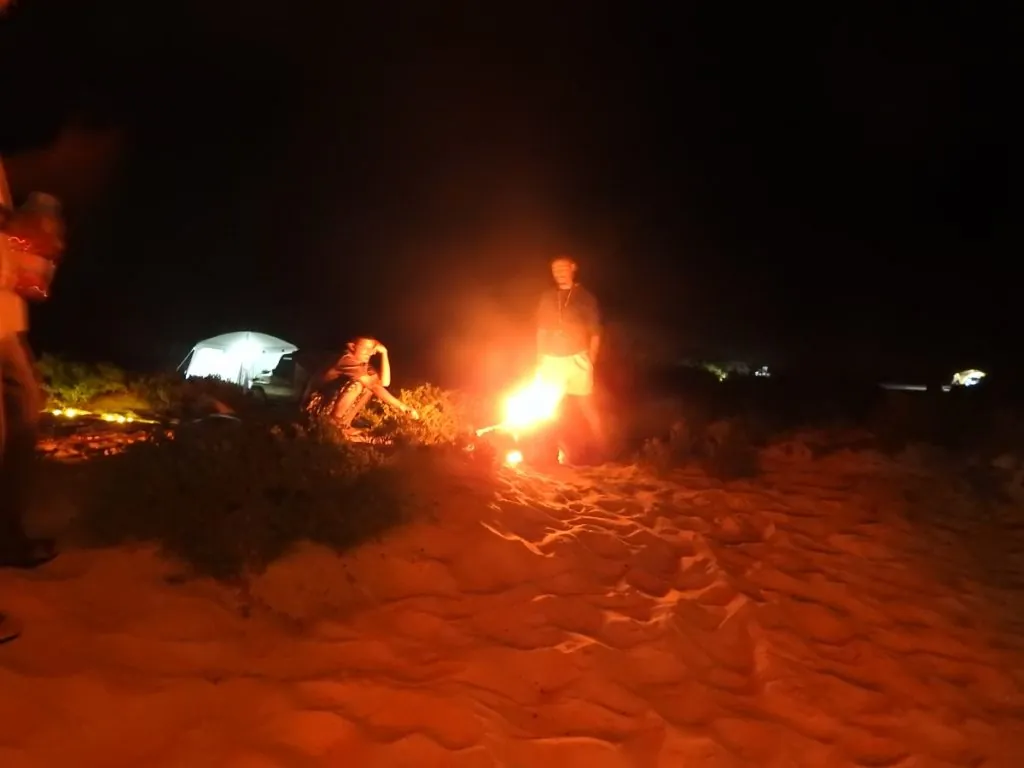
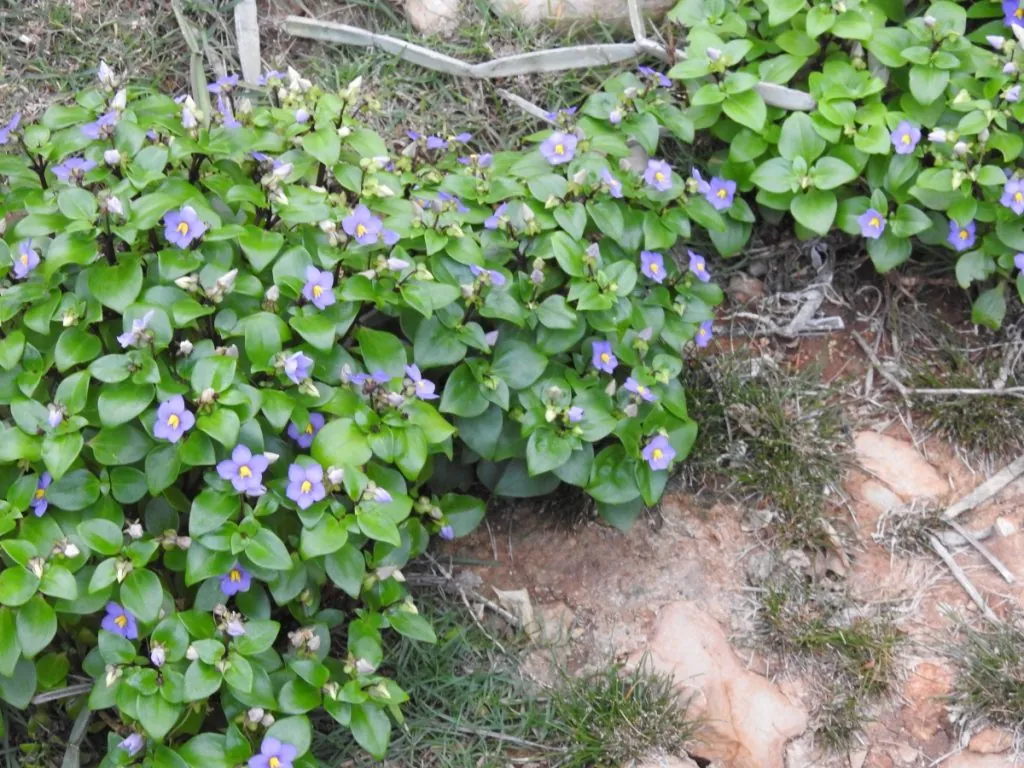
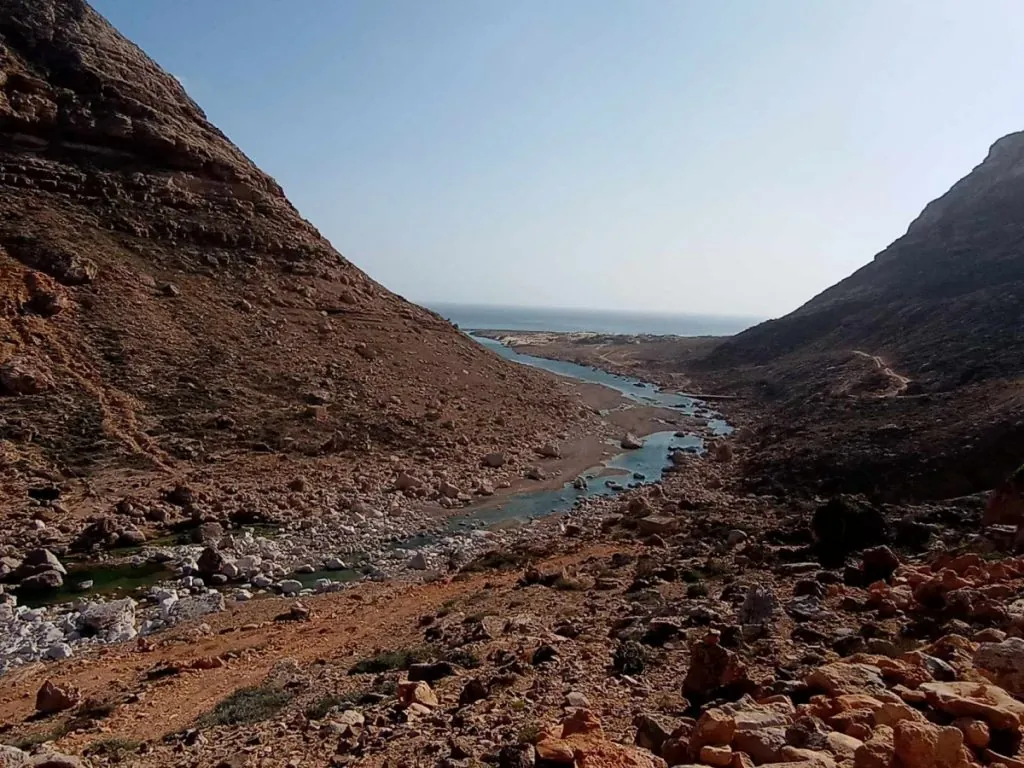


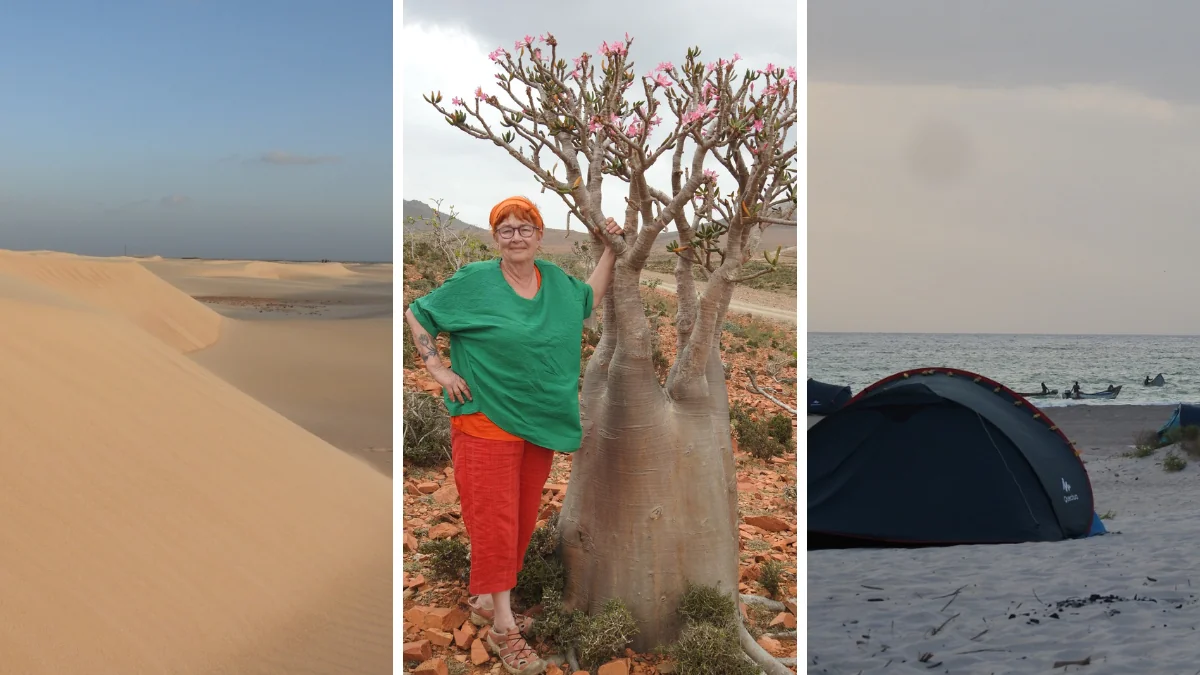







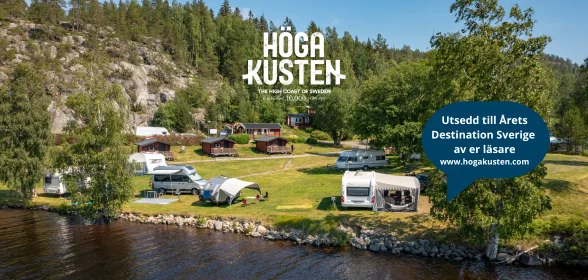


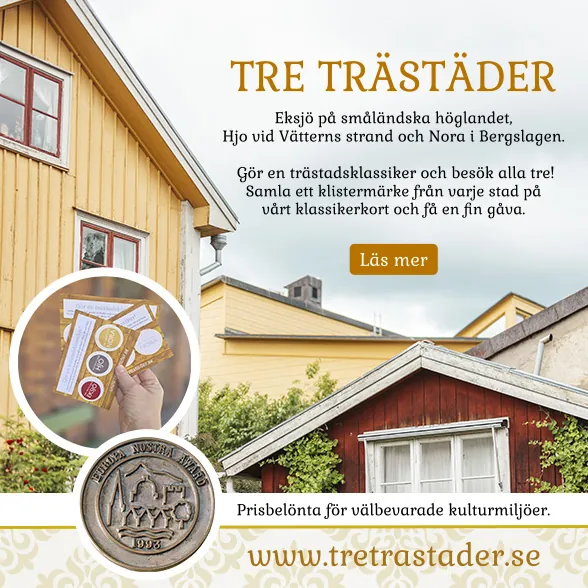
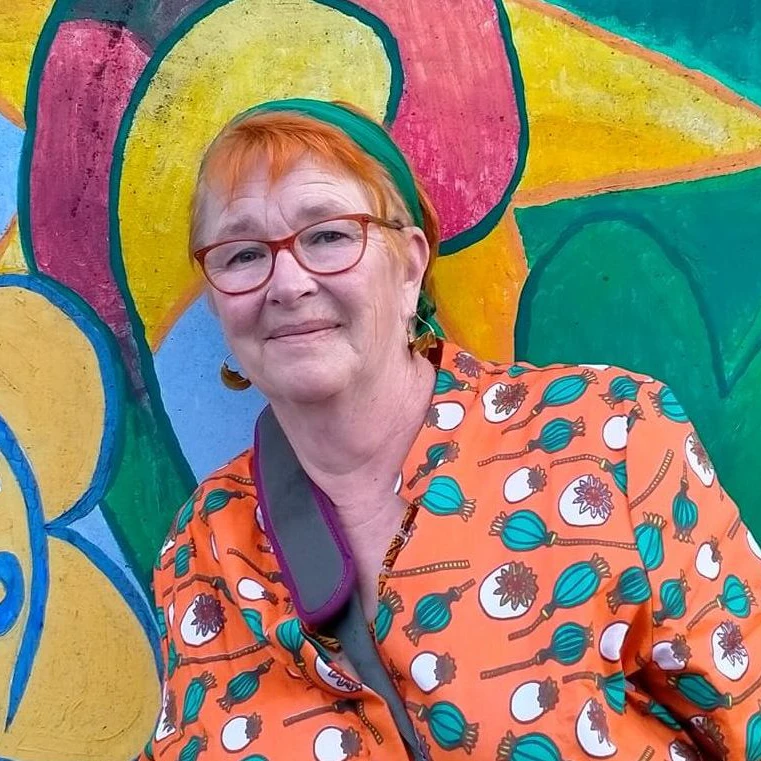
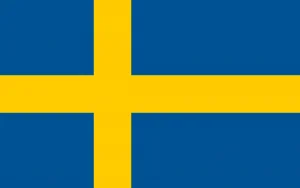

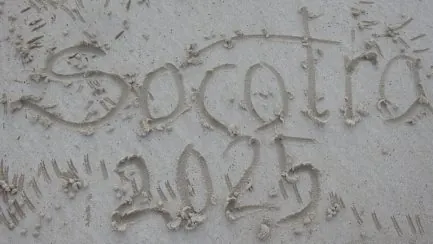

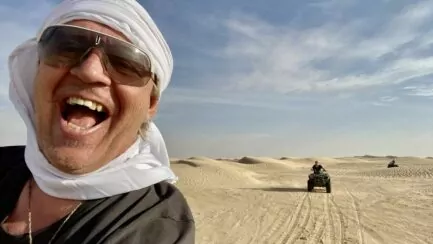

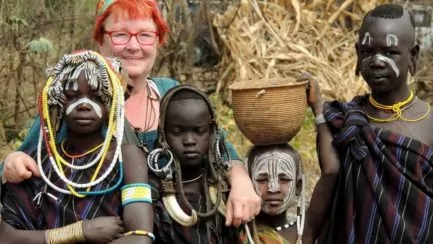



Madde says:
What a journey you are on. Thank you for sharing amazing pictures and so much inspiration.
26 January 2025 - 7:38
Anna says:
Yes it was a real treat on all levels. Thanks for reading
26 January 2025 - 16:40
Aboro says:
How interesting, what a trip! Wonder how they had arranged for toilets and washing facilities while camping?
26 January 2025 - 8:38
Anna says:
Wash..possibly rinse in cold water, toilet, we had portable ones with us and some campsites had toilets
26 January 2025 - 16:41
Orsakulla mum at 20 - Dala life, fine china & poodle life says:
What an experience, there must have been something really magical about travelling there I think. Cool too!
26 January 2025 - 8:43
Anna says:
It was both cool and magical! Thank you for reading
26 January 2025 - 16:42
Netti Starby says:
What a wonderful journey with many exciting experiences. Hugs <3
26 January 2025 - 11:37
Anna says:
That's it, one of my cooler trips . Thanks for reading
26 January 2025 - 16:43
BP says:
What a unique adventure that you really document perfectly with many pictures that are as always wonderful.
I just love these "bottle trees" that look like a body with two legs stretched in the air. And then the "hairstyle" of it. Spontaneously thought of cherry blossom here, although they really have nothing in common;-)
The nature is amazing. Sometimes I wonder who or what created it, especially the one on Socotra;-)
The sand dunes are reminiscent of the waves on an open sea. So beautiful!
And that you managed the "walk" over log and stone - congratulations!!! If you want to, you can or how it is probably called.
I think the children are generally very beautiful. Were they begging or did they just want to say hello. Children flocking around visitors reminds me of Gambia in the 1980s. The entourage of children was huge. They were not begging, but "expecting material gifts like pens and paper.
Waiting with excitement for part three of your adventure:-)
26 January 2025 - 19:40
Anna says:
I'm so happy about your nice comment, thank you! The children are not begging at all, they are curious and want to practice their English. Have a good time
27 January 2025 - 8:14
Annie Jansson says:
What a great trip!
Sounds exciting with the camping 🙂
26 January 2025 - 20:02
Anna says:
Thanks for reading. Camping was quite ok considering the nice places
27 January 2025 - 8:16
bmlars travelling companion says:
What a wonderful trip you have been on, what views! We went camping for two weeks in Botswana at a very young age and we would never have traded those nights for the most beautiful lodge. Thank you for taking us to places we will never visit...
26 January 2025 - 20:16
Anna says:
Thank you for the nice comments, yes the views were unbeatable and camping there was great
27 January 2025 - 8:17
Lena - good for the soul says:
So exciting to read. What incredibly funny, strange and smart trees!
23 February 2025 - 10:46